The terrible beauty in Snowdonia’s slate mines
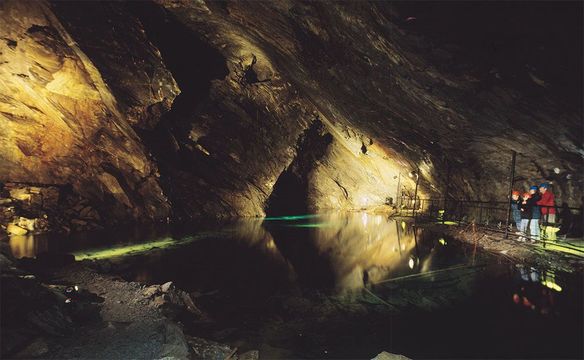
Snowdonia's slate mines Getty: Images
I n days gone by and still today, a resident of Wales lives under a slate roof, walks on pavement made of slate and lies at last under a slate tombstone.
The heart of the slate business beat in Blaenau Ffestiniog, an enclave in the mountains of Snowdonia that became renowned as “The Town That Roofed the World.” A Welshman who had quarried slate in a 19th-century slate mine, such as the Llechwedd Slate Caverns at Blaenau Ffestiniog, would have spent his days in an ill-lighted, cold, dirty and dangerous space, emerging at end of day bent and white-faced, covered in slate dust and gunpowder. For this, he might earn about 12 pence a day.
Slate is the lowest grade of metamorphic rock, put under pressure beneath the earth some 500 million years ago. It consists chiefly of quartz, clay, chlorite, mica, feldspar, and pyrite. As it cooks within the earth’s crust, the clay reverts to mica and develops a “slaty cleavage”—meaning it can be split into thin layers. These slates can become everything from roofing tile, electrical panels, hearths and paving stone to memorial plaques, flooring, billiard tables and whole buildings—and items sold in gift shops such as candle holders, wine racks, coasters and picture frames.
- The Royal decade in technicolor
- Haltwhistle, the center of Britain
- British open-air museums
In a bygone era Welsh slate was used as blackboards and handheld writing tablets. It can be blue, purple, green or, most commonly, several shades of grey. The local ancient Romans knew its properties well, and used it to roof and floor their 3rd-century forts nearby. Slate mining became Blaenau Ffestiniog’s chief industry in the 1760s, thanks to Methusalem Jones who recognized that the slate there split perfectly. He opened a quarry, and other quarries followed. One, the Oakeley, became the world’s largest underground slate mine, with 50 miles of railroad on various levels. At the industry’s peak, more than 4,000 men worked in Blaenau Ffestiniog, which was the first town in Britain to have electric street lights.
Our miner worked from 6 a.m. to 5 p.m. Monday to Friday, with a half-day on Saturday, with Sunday and religious holidays off. If he had the misfortune to arrive five minutes late for work, the steward would send him home, and his earnings for the day would be nil. If he survived death by falling rock, the mine would have been done with him at age 40 or so, since he would be coughing his lungs out from silicosis. He would buy and maintain his own tools, ropes and candles—lamps would have given better light, but oil was expensive.
Perhaps his father or brothers would work alongside him, with an 8-year-old son or nephew to make the tea. When the lad reached the age of 18, he would become an apprentice. The miner’s tea break, in a cabin that he had constructed out of odd pieces of slate, lasted 15 minutes, with another 15 for “refreshment of the brain.” He and his colleagues might discuss, for example, religion or the welfare of a sick colleague. Welsh was the principal language, but there were some English and Irish speakers among the workers.
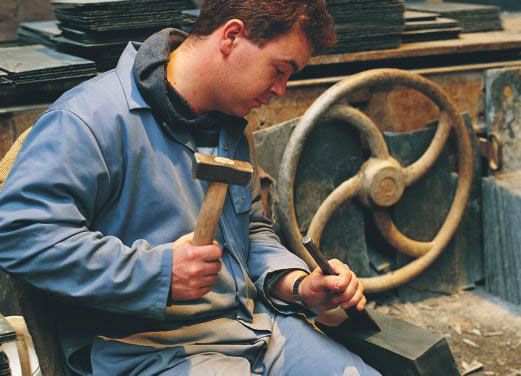
The miners’ workplace was an underground “chamber”— an opening in a slate deposit solidly packed with slate and supported by pillars built to separate it from the chamber next door. It would take about 15 years to work it out. A team of four men would haggle with the surveyor for a price for the chamber. Having come to an agreement, they could call themselves rock men and the chamber theirs, and begin work. They might have ridden in via a little carriage that visitors use today, but more likely they pushed their equipment in a hand cart. Only coal mines had the luxury of pit ponies.
They started by inserting a “jumper,” a long weighted rod, into the rock and hammering it firmly into place to make holes in the rock face. It would have taken these strong and fit men four hours to accomplish this.
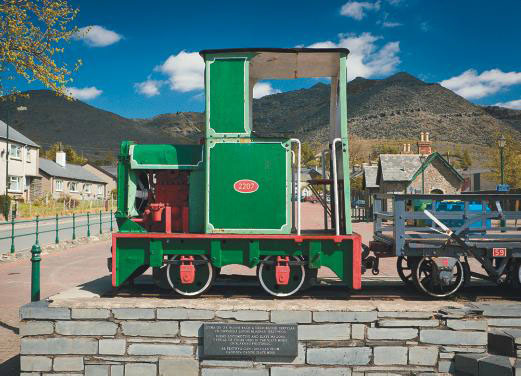
CROWN 2014, VISIT WALES
Next, they put gunpowder into the holes; there was no such thing then as dynamite or gelignite. A fuse made of string dipped in tar and gunpowder was put into the holes, packed with newspaper, hammered in firmly with a wooden mallet and set alight. With luck, everybody ducked around the corner as the blast went off. It would not have been a very loud explosion, since the point was to crack and split the slate, not shatter it.
Then it was time to re-enter into the smoky, dusty chamber and break the slate into chunks. They levered them out with crowbars, looking for big cracks and splits to make the job easier. Having achieved a mighty pile of slate, two of them went up to the mill on the surface to wait for the others to load the slate on the carriages and haul it up. They staked out a cutting table and made sure their name and chamber number were on it (since everyone was named Jones, Evans or Williams). There, the slate was split into roofing shingles, 1,000 of them per day if the men expected to earn any money.
Meanwhile, another worker, called the danger man, climbed a precarious ladder, a candle in one hand and iron bar in the other, 100 feet above the cavern floor with only a chain around his leg as a safety precaution, to check the ceiling for loose rock. He might see a bit more pay in his packet on the weekly “Day of the Big Pay” if the mill owners liked what he was doing. He ensured that workers arriving in the morning wouldn’t find a surprise dropping on them from above. A rock fall at Blaenau Ffestiniog in 1882, known as The Great Fall, buried valuable slate under 6 million tons of rock.
When the Ffestiniog Railway began using steam trains to haul slate from the quarries to the port of Porthmadog 14 miles west, Welsh slate could be shipped to England, Ireland and the Continent at much less cost than sending it overland. It was the first railroad in the world to use narrow gauge steam locomotives over a significant distance. That paved the way for passenger traffic and articulated locomotives, and spiked the growth of such railways around the world.
Today, visitors can travel on the Ffestiniog Railway from Porthmadog to the Llechwedd Slate Caverns and Victorian village at Blaenau Ffestiniog on restored cars pulled by restored engines, past gorgeous scenery, enjoying onboard catering. Then, they can descend (warmly dressed, one hopes) into the slate mines and enjoy an excellent demonstration of slate cutting. At the mill, a sturdy man splits the slates by hand just as it was done for generations. Some of this process is mechanized now. Most become roofing slates, their sizes distinguished by quaint titles such as Empress, Princess, Broad Countess, Wide Lady and Broad Lady. Slate miners no longer work underground, and their working conditions are considerably safer than of old, as compressed air has replaced gunpowder.


Snowdonia and the Slate Mountains
Take the train from London Paddington to Porthmadog. Change at Birmingham. Porthmadog has many types of accommodations. Buses go to nearby attractions, including Portmeirion, Carnarvon Castle, Betws-y-Coed and Mount Snowdon, with gorgeous scenery throughout. Porthmadog taxis are cheap and drivers helpful. The Ffestiniog steam railway runs from Porthmadog to the slate mines of Blaenau Ffestiniog, from April through Christmas. www.festrail.co.uk The slate mines open at 9:30 a.m., first tour at 10. One tour takes visitors on the Miners Tramway to the informative underground tour. Buy old-fashioned sweets in the Victorian village, where crafters and musicians perform (April-September). Other shops and cafes are a short walk away. www.llechwedd-slate-caverns.co.uk .
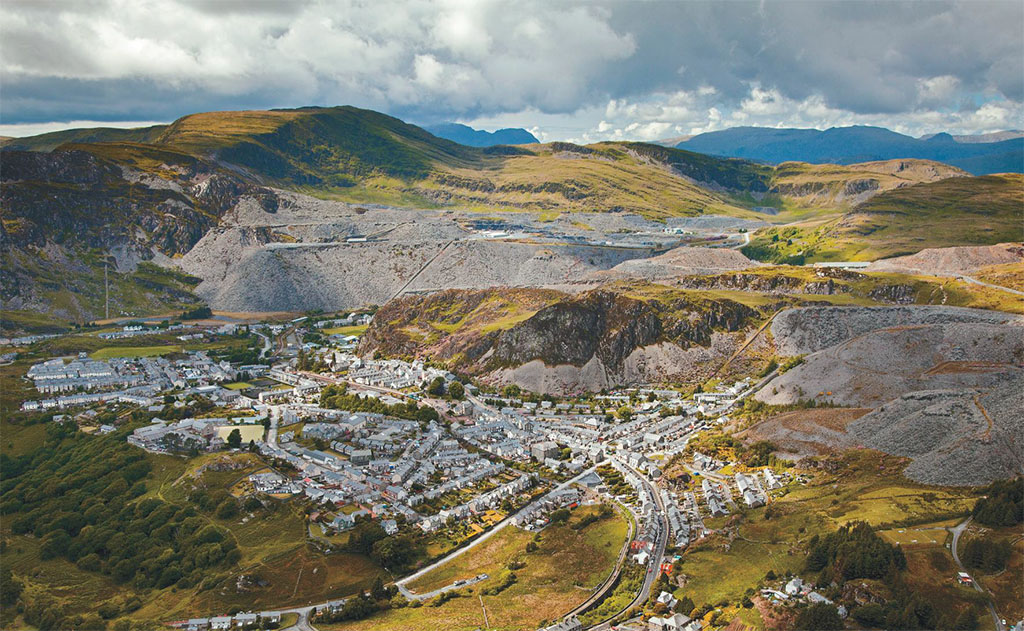
D uring World War II, a Blaenau Ffestiniog slate mine was put to another use. Trucks with chocolate company logos could be seen making their way up a single-track road to Manod Quarry. Sometimes their tires had to be deflated and then re-inflated to allow them to pass under bridges, or a whole section of road had to be dug up and lowered. Their cargo was not Cadbury’s but works of art by Michelangelo, Da Vinci, Reubens and such. They came from the Tate, the National Gallery and Buckingham Palace, from the Tower of London and from Cambridge, where the precious stained-glass windows of Kings College Chapel were carefully disassembled and wrapped.
The art traveled to North Wales by order of Prime Minister Winston Churchill, who wanted to keep the country’s art treasure safe and out of enemy hands. Operations began in 1940, when the Luftwaffe was determined to do its worst to London. A tunnel 1,200 feet long, 200 feet high and 1,000 feet underground, heated and ventilated to simulate museum conditions, protected the pictures behind steel and timber doors. Meanwhile, slate mining went on as usual.
Nearby Caernarvon Castle and other Welsh castles sheltered more British art as well as other artwork from European nations that had fallen to the Germans. After the war, some 2,000 works were returned to their homes undamaged. It was said that some of the paintings emerged in better shape than when they went in due to the superior conditions in their temporary home. There was much speculation among the locals as to just how much chocolate the mine required, and some of them caught glimpses of the hidden treasures, but the drivers were sworn to secrecy, and the enemy never caught wise. By government order, the ventilation system stayed in place years after the pictures were removed. Unfortunately, there is no chance of touring the Manod mine. The roof has begun to collapse, and it still keeps its secret of how it saved Britain’s masterpieces.
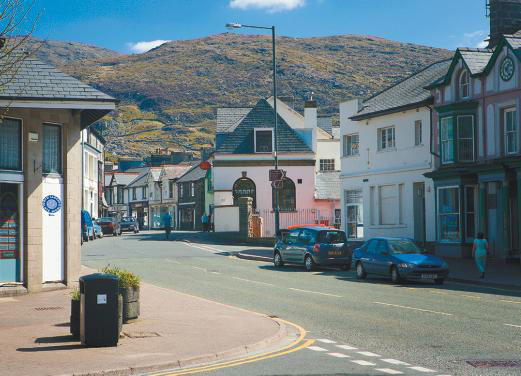
Related: history
BHT newsletter
You may also like.
- Most Recent

Queen Victoria's coffin and the ...
A stern Queen, overcome by grief, who oversaw 63 years as the Monar...

Everything you need to know abou...
Prince Philip sadly passed away on April 9, 2021. We take a look ba...

The great castles of North Wales
King Edward I’s chain of stone fortresses, across Wales is as impos...

The Irish Lord who captured Quee...
Queen Elizabeth and Patrick Plunket enjoyed a special relationship....

The history of the Irish Crown J...
Did you know that Ireland was presented with crown jewels by both H...

When Winston Church became Prime...
On May 10, 1940, Winston Churchill, the British leader who guided G...

Who is Prince Richard, Duke of G...
Prince Richard the Duke of Gloucester is the late Queen’s cousin an...

The most expensive jewelry the R...
The prices of some of these pieces of jewelry will surprise you!

Queen Elizabeth II's Coronation:...
The Coronation of Queen Elizabeth II was ground-breaking in its own...

Britain’s Queen Mother was despe...
State papers reveal that Queen Elizabeth's mother was "dying to go"...

Dinorwic Quarry Wales (2024 Guide) – How to Visit & Things to Do!
By: Author Sophie Pearce
Posted on Last updated: January 1, 2024
Categories SNOWDONIA , WALES
This post may contain affiliate links. Please see my disclosure policy for details.
One of the best-hidden gems in Snowdonia National Park has to be Dinorwic Quarry which sits above the town of Llanberis.
It’s a disused slate quarry that was once a powerhouse of slate mining and at its peak was the second-largest producer of slate in the world.
Today, it’s a popular attraction for both walkers and rock climbers as it has incredible panoramic views over Snowdonia.
Everything I read online said that I needed to complete a lengthy and steep 3-mile/5-kilometre walk to visit Dinorwic Quarry from Llanberis. But, this simply isn’t true.
It’s really easy to drive and park right beside the quarry and you can even get a bus straight to the site if you aren’t driving.
Here is how to visit Dinorwic Quarry in Wales and all the amazing things that you can do there.
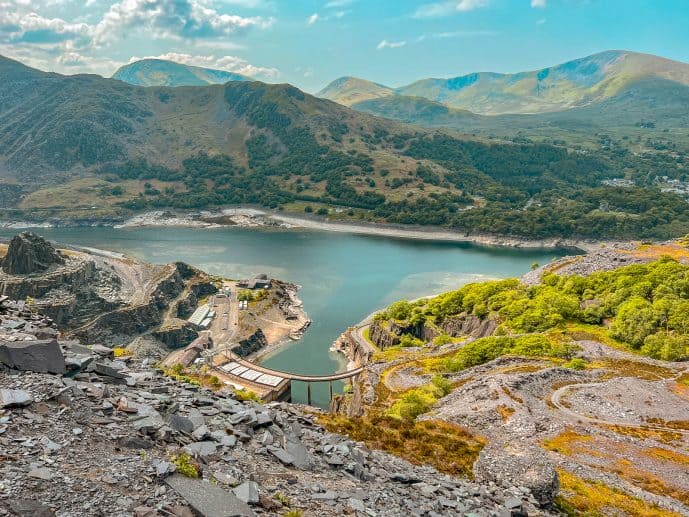
What is Dinorwic Quarry?
Dinorwic Slate Quarry is an enormous former slate quarry that is now home to the National Slate Museum and sits high above the town of Llanberis.
The quarry covered 700 acres of land and had two quarry sections with 20 galleries in each one.
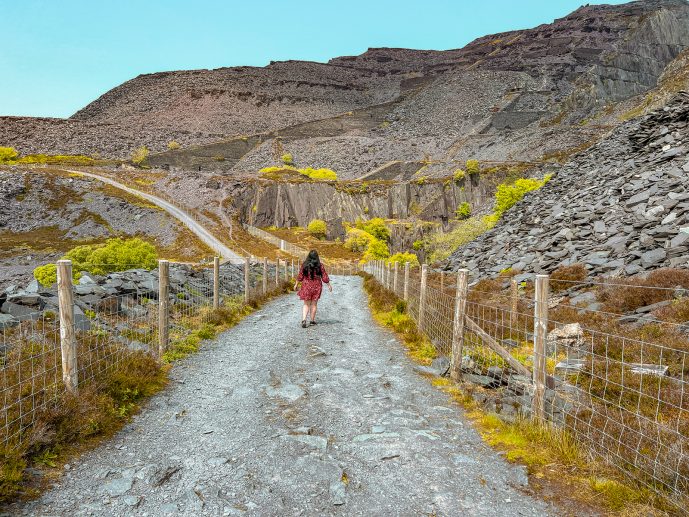
Today, it has a public walking path that snakes through the site and is popular with hikers and extreme rock climbers.
The highest point is 670 metres above sea level and so it provides spectacular panoramic views over Snowdonia National Park.
From here, on a clear day, you can see over Llyn Padarn, Llanberis, Dolbadarn Castle, the peaks of Snowdonia, and for miles beyond that.

Dinorwic Quarry history
Llanberis slate has a history starting 500 million years ago when the mud layers were fused with volcanic rocks, lava, and ash. Over many eons, it produced some of the finest slate in the world.
Mining for slate in Dinorwic Quarry started around 1787 and at its peak during the 19th century, it was the second-largest producer of slate in the entire world aside from its neighbour Penrhyn Quarry.
It hired over 3000 men and turned over nearly 100,000 tons of roofing slate a year to meet the surge in demand.
The highest working level of this quarry was over 670 metres above sea level and it was home to the highest locomotive shed in Britain.
It was owned by the Assheton Smiths who lived on the nearby Faenol estate but after 1951 it was operated by a private company.
The mining stopped in 1969 and the disused quarry was used to create ‘Electric Mountain’. It provided much-needed employment and it opened in 1984.

As the mining leftover 90% of slate waste, the station had to remove over 200,000 tonnes of cement and 4,500 tonnes of steel found in the underground tunnels.
Much of the slate waste above ground can be seen all over the quarry today and looks like landslides.
In 1972, the Gilfach Ddu workshops became a museum and today it’s the National Slate Museum .
I would highly recommend visiting as it’s completely FREE and really gives you an idea of the impact the Welsh slate industry had in Wales.
The quarry is still owned by the county council and the museum but anyone is free to visit and use the walking paths.
This area provides panoramic views over Llanberis and the peaks of Snowdonia. It’s even been featured in Hollywood blockbusters like Clash of the Titans!

Can you visit Dinorwic Quarry?
YES, the great thing about Dinorwic Quarry is that it’s open to the public and it’s completely FREE to visit.
It’s also easy to access the slate quarry from the town of Llanberis by car, bus, or on foot.
As you’re so high up here in the slate quarry, you get majestic panoramic views over Llanberis, Snowdonia, Llyn Padarn, Dolbadarn Castle, and more.
It’s honestly one of the best-hidden gems in Snowdonia National Park. I can’t believe I haven’t done this before now as it’s so easy to visit!

How to visit Dinorwic Quarry
Dinorwic Quarry can be found above the town of Llanberis in Dinorwig in Snowdonia National Park, North Wales.
It’s easy to visit whether you are driving, using public transport, or heading there on foot.
It doesn’t have a specific address as it’s on an ‘unnamed road’ but you can use this Google Pin to locate it!
Here are all the ways that you can visit the slate quarry in Wales;

Driving to Dinorwic Quarry
The easiest and most convenient way to reach Dinorwic Quarry would be to drive there. It’s just a short drive up from Llanberis.
Many of these roads are very steep, winding, and narrow with passing places, so be careful as you go.
The easiest way to get there is to make a heading to the Blue Peris Mountain Centre .
There is a large parking area just outside the quarry entrance and bus stop. It’s a circular turning point where the road ends.
Once you leave your car, it’s then a 5-10 minute walk on a flat pathway to visit the Llanberis viewpoint and the slate quarry.

Dinorwic Quarry parking
There is a large off-road parking area just outside the Dinorwic Quarry entrance that you can use which is completely FREE.
People park around the circular turning in the road before it ends and way up the road on off-road lay-bys.
This area can get very busy, especially on weekends, in the summer, or when there is good weather. I would visit early morning or later in the afternoon to guarantee a parking space.
Remember to park with consideration and don’t block emergency access gates or the Sherpa Bus Stop.
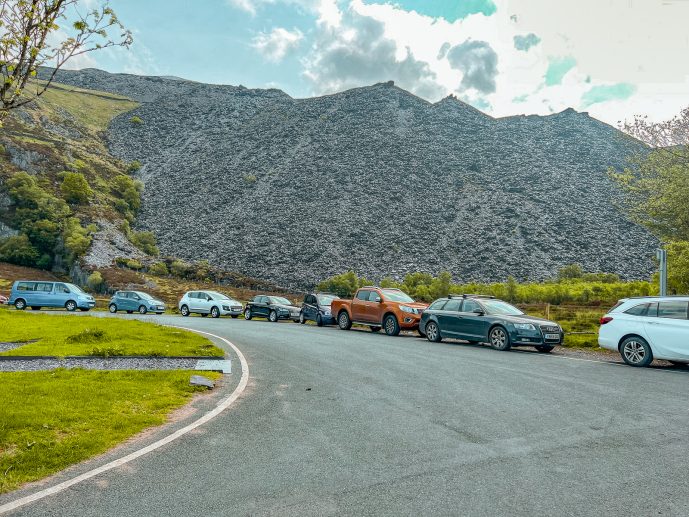
Get a bus to the slate quarry
When I arrived at the parking area, I was amazed to see that you can also visit Dinorwic Quarry by bus.
There is a Dinorwig Bus Terminus that is right beside the quarry entrance and is serviced by Sherpa Bus.
Sherpa Buses have a huge network of stops that cover the entire Snowdonia National Park and it’s a great way to get around if you’re not driving.
The S3 Purple Line tops at Dinorwig multiple times a day. It’s then just a short walk to the quarry.
Click here to find out timetables and prices for the Sherpa Wyddfa

Dinorwic Quarry walk from Llanberis
The other option is to do a 3-mile (5 kilometre) walk to visit the quarry from the town of Llanberis and the Slate Museum.
I would only recommend doing this if you have a reasonable level of fitness as there are some seriously steep and slippy ascents.
But, it does look like a very scenic walk and you can pass the Anglesey Barracks along the way. The forgotten street of Snowdonia.
The entire walk will take you around 2-3 hours and you will then loop back around to Llanberis and Llyn Padarn.

Dinorwic Quarry opening times and prices
Dinorwic Quarry doesn’t have any opening times and it’s open to the public 24 hours a day.
I wouldn’t recommend visiting this place in the dark as it wouldn’t be safe. There’s no artificial lighting whatsoever.
It’s also completely FREE to visit Dinorwic Quarry in Snowdonia and it makes an incredibly scenic walk.
I couldn’t believe that these panoramic views didn’t cost a single penny.

Things to do in Dinorwic Quarry
So, what is there to do in Dinorwic Quarry when you arrive? Well, there’s actually a surprising number of things to see.
From incredible viewpoints to walking paths, rainbow rocks, rock climbing, wildlife spotting and abandoned houses.
Here are all the best things to do in Dinorwic Quarry!

Llyn Padarn and Llanberis Viewpoint
Many people visit this area to see the Llyn Padarn and Llanberis Viewpoint and it’s easy to see why.
From these heights, you can see for miles around the area. If you head towards the quarry and turn right, you’ll find a viewing platform at the end of the path.

From this point, you can see Llyn Padarn and even the Lonely Tree. My favourite was the view of Dolbadarn Castle from above.
Of course, the best part is seeing the peaks of Snowdonia. So, it’s recommended to travel on a clear day for the best experience.

Take a walk through the Slate Quarry
There is a dedicated path that will take you the entire way through the slate quarry to explore it safely.
If you follow the main route, you’ll walk past the dramatic landscape that has been left behind and was the result of over 150 years of Welsh Slate Mining.

It’s mostly a flat path but it is quite rocky and there are some steep inclines so make sure to wear a sensible pair of shoes.
Many people were climbing over fences to explore the caves and mountain quarry sections. But, it is not safe and you do so at your own risk. I would heed the numerous warning signs and stick to the paths.
I explored a small area off the main path as there was a stile to walk over and access it.

I presumed this meant it was fine to explore. It had a tear-shaped door to access the area and beyond that, there were some workshop ruins and makeshift slate benches to perch on.
It was an amazing place to sit and just admire the views. Although it was a sunny weekend it was so quiet. A great place to avoid the crowds in Snowdonia.

See rainbow walls & slate landslides
One of the most fascinating things about Dinorwic Quarry was all the colour that can be seen in the rocks. These are locally known as the Rainbow Walls.
Rock climbers and mountaineers call it the ‘Rainbow Slab Area’ as the minerals and slate veins have left behind different colours in the cliff face.
Another thing that is incredible to see is all the slate ‘landslides’. Apparently, the slate mining left behind over 90% of waste!
So, you’ll see lots of slate shards and ruined buildings everywhere around the site. People were climbing up the old mine train tracks and all sorts here. You could honestly spend a day looking around.

Dinorwig Rock Climbing
Mountaineers visit Dinorwic Quarry to carry out some extreme rock climbing in this area.
There are lots of different places to go like the Rainbow Slabs, Emerald Dyke, Midgrade Cracks, Gwion’s Groove, and Fools Gold.
Some are even more extreme and take a few hours to complete. You’ll see many climbers dotted about here on a clear day.
If you are a rock climber yourself and wanted to give it a try, I would recommend reading this article by UK Climbing to know what you’re getting into.

Clash of the Titans filming locations
Dinorwic Slate Quarry has been closed for over 50 years and the quarrymen here would never know that they were actually creating a film set for Ancient Greece.
Warner Brothers used Dinorwig to film their blockbuster Clash of the Titans (2010) here starring Sam Worthington and Liam Neeson.
The plot follows the hero Perseus on a quest where he has to battle the Goddess Medusa and the Kraken in order to save Princess Andromeda.
It put a hold on lots of rock climbing and walking that summer for locals but did provide a few million pounds for the local economy.
So, when you walk around Dinorwic, you can feel like you’ve been transported back in time to an era of Greek myth and legend.

Welsh Mountain Goats
On my way back from the slate quarry, I was lucky enough to see some of the Welsh mountain goats that make a home here. They are part of a huge herd.
The goats here are quite distinctive as they have shaggy fur and huge curving horns! But, don’t worry they stay well away from visitors and mostly graze and rest on the hills.
Likewise, don’t approach them or try to feed them. They are wild and may have young they want to protect.

Anglesey Barracks – the forgotten street of Snowdonia!
Many of the quarrymen that worked in the Welsh mines were given terraced housing high up on the mountainside near their workplace.
They were tiny homes and wouldn’t be suitable for living today. Many of these have been dismantled over time but one forgotten street that has survived is the Anglesey Barracks.
Although the name does make it sound like an army base, the slate barracks were for travelling quarrymen who didn’t live near the site.
The ramshackle houses were miserable places to live. They were very cramped and often drafty with little shelter from the elements.
They were also crawling with vermin but the workers were still expected to pay a shilling out of their wages to live in them!
Each of the 22 houses had 2 tiny rooms. One was a bedroom with four cots for the quarrymen to sleep in and the other was a living area with some crockery, a table, and a fireplace.
There was no indoor toilet or plumbing. There was a place for washing in an outhouse. They were eventually abandoned in 1937.
Today, the forgotten street lies in ruins and has been overtaken with time by the elements. But, you can visit what remains on a short walk from Dinorwic Quarry.
I would recommend heading back to the quarry car parking area and walking to them on the signposted route. It’s the safest and easiest way but be warned there are lots of steep steps and paths.
Click here to read my Anglesey Barracks guide with walking directions
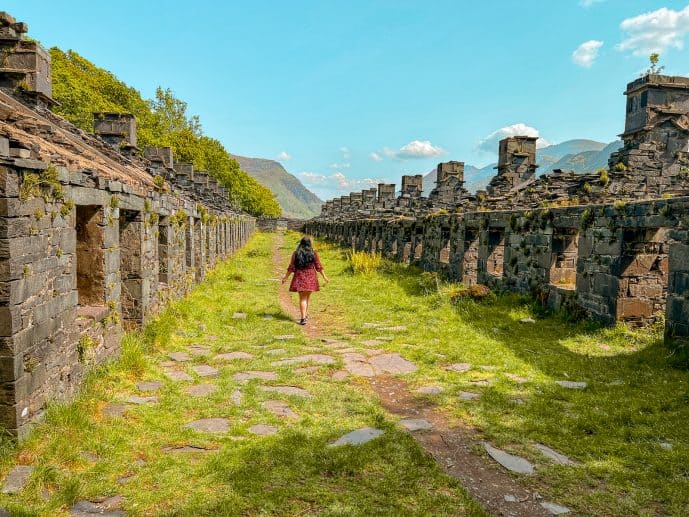
My top tips for visiting Dinorwic Quarry
- Get here early – parking is free but limited, I would get here early to guarantee a parking space.
- Stay safe – many people climb over fences and enter the quarry caves where it’s not safe. You do so at your own risk. Heed warning signs and keep to the main path.

- Bring water and snacks – there are no facilities up here at Dinorwic. No tearoom or drink stand. So, bring your own water bottle and food. Leave no trace and take rubbish with you.
- Toilets – there are no toilets at Dinorwig. So, I would make use of some in Llanberis before you set out and explore.
- Wear sensible shoes – the quarry is slate (I mean, duh) but that means that there are lots of slippy rocks and slate piles that are easy to trip or slip on. Shards of slate can cut like glass. Sensible walking shoes are highly recommended.

Dinorwic Quarry FAQs
- Is Dinorwic Quarry open to the public? Yes, it’s open to the public. Just make sure to heed warning signs and follow the set paths.
- How much does it cost to visit Dinorwic Quarry? It’s FREE. You don’t have to pay to visit Dinorwic Quarry.
- Where is Dinorwic Quarry? It’s in Llanberis in North Wales within Snowdonia National Park.
- Who owns Dinorwic Quarry? Caernarfonshire County Council & The National Slate Museum.

Looking for more things to do in and around Llanberis?
There are so many amazing things to do in and around Llanberis aside from Dinorwic Quarry!
It’s really the hub of Snowdonia National Park and it’s your gateway to the Snowdonia Massif range.
After this, I would recommend visiting the National Slate Museum to learn more about the history of Slate production and trade in this area.
It’s completely free and will give you some context about the quarry you’ve just explored.
After, you can take a scenic stroll around Llyn Padarn and Padarn Country Park. The most famous spot is the Lonely Tree which sits on the lakeside. I have a post with directions.
You can see the Blade of the Giants on your way. Or, why not take in the sights with a Scenic Lake Railway journey?
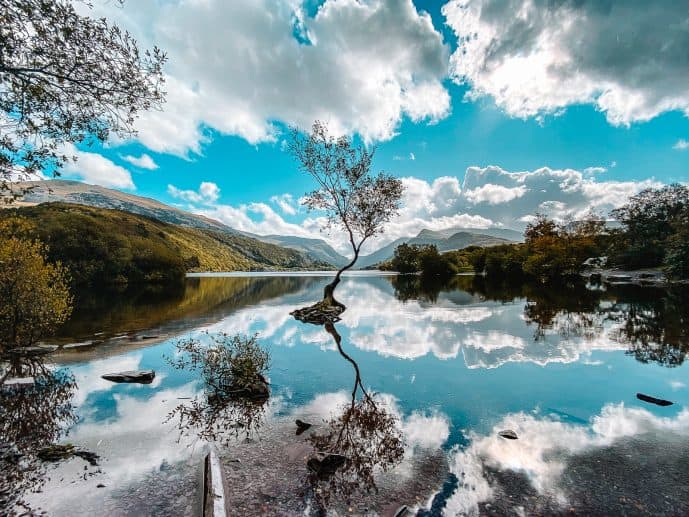
As a history lover, the majestic Dolbadarn Castle was a personal favourite of mine.
This scenic ruined castle in the mountains was a symbol of Welsh identity and power! It’s completely free to visit and the scene makes a gorgeous photo.
Many people visit Llanberis to start their ascent up Snowdonia, there are plenty of walking routes that you can choose from. Or, if you’re not up for a hike you can take the Snowdonia Mountain Railway to the top!
The colourful streets of Llanberis are also lovely to explore and there are plenty of cafés to grab a quick coffee, some lunch, or supplies for your hike.
There is an endless choice of activities to enjoy with a visit here. So, make sure you plan enough time to explore!

Read more of my North Wales & Snowdonia guides!
Look inside the Smallest House in Great Britain!
Penmachno Roman Bridge photography location
An easy Aber Falls walk guide
Why is the Ugly House called Ugly?
When does Tu Hwnt I’r Bont turn red?
The legend of Gelert & how to visit his grave
The top places to visit in Beddgelert
Visiting the Cauldron Waterfall of Pont-y-Pair
How to find Sappers Suspension Bridge
A complete Swallow Falls guide
Why you MUST visit the Fairy Glen Gorge
A complete Conwy Falls & cafe guide
A complete guide for the Conwy Town Walls
How to do the Llyn Idwal Circular Walk
A complete guide for the Dinas Emrys Walk & Dragon legend
How to see the Bodnant Garden Laburnum Arch
How to visit Pistyll Rhaeadr Waterfall
Gladstone’s Library – Stay in the UK’s only residential library
Save how to visit Dinorwic Quarry for later!

National Slate Museum

Most Recent: Reviews ordered by most recent publish date in descending order.
Detailed Reviews: Reviews ordered by recency and descriptiveness of user-identified themes such as waiting time, length of visit, general tips, and location information.

NATIONAL SLATE MUSEUM: All You Need to Know BEFORE You Go (with Photos)
- Snowdonia & The 3 Castles Tour (From £59.69)
- Private Snowdonia Essentials Hollyhead Shore Excursion (From £403.68)
- Snowdon Kayak Adventure on Llyn Padarn (From £44.51)
- Llanberis, Conwy and Caernarfon Castle: A Self-Guided Driving Tour of Snowdonia (From £11.93)
- Private Snowdonia & The 3 Castles Tour (From £403.68)
- (0.41 mi) Dolafon Guest House
- (0.48 mi) Plas Coch Guest House
- (0.47 mi) Glyn Afon Guesthouse
- (0.48 mi) Dol Peris
- (0.59 mi) Llanberis Lodges
- (0.07 mi) Llanberis Lake Railway Cafe
- (0.44 mi) 1085 Bistro
- (0.41 mi) Llygad yr Haul
- (0.46 mi) The Peak Restaurant
- (0.47 mi) Pantri
Take advantage of the search to browse through the World Heritage Centre information.
Share on social media
Unesco social media, the slate landscape of northwest wales.
- Description
The Slate Landscape of Northwest Wales illustrates the transformation that industrial slate quarrying and mining brought about in the traditional rural environment of the mountains and valleys of the Snowdon massif. The territory, extending from mountain-top to sea-coast, presented opportunities and constraints that were used and challenged by the large-scale industrial processes undertaken by landowners and capital investors, which reshaped the agricultural landscape into an industrial centre for slate production during the Industrial Revolution (1780-1914). The serial property comprises six components each encompassing relict quarries and mines, archaeological sites related to slate industrial processing, historical settlements, both living and relict, historic gardens and grand country houses, ports, harbours and quays, and railway and road systems illustrating the functional and social linkages of the relict slate industrial landscape. The property was internationally significant not only for the export of slates, but also for the export of technology and skilled workers from the 1780s to the early 20th century. It played a leading role in the field and constituted a model for other slate quarries in different parts of the world. It offers an important and remarkable example of interchange of materials, technology and human values.
Description is available under license CC-BY-SA IGO 3.0
Le paysage d’ardoise du nord-ouest du pays de Galles
Le paysage d’ardoise du nord-ouest du pays de Galles illustre la transformation que l’extraction industrielle de l’ardoise a entraînée dans l’environnement rural traditionnel des montagnes et vallées du massif Snowdon. Ce territoire, qui s’étend du sommet des montagnes au littoral, présentait des atouts qui ont été exploités et des contraintes qui ont été surmontées par l’industrialisation à grande échelle entreprise par des propriétaires terriens et des investisseurs, qui ont remodelé le paysage agricole en un centre industriel de production ardoisière pendant la révolution industrielle (1780-1914). Le bien en série est composé de six éléments comprenant chacun des carrières et des mines reliques, des sites archéologiques liés au traitement industriel de l’ardoise, des établissements historiques, vivants et reliques, des jardins et des palais historiques, des ports et des quais, ainsi que des réseaux ferroviaires et routiers illustrant les liens fonctionnels et sociaux du paysage industriel d’ardoise relique. Ce bien revêtait une importance internationale en matière d’exportation d’ardoises, mais aussi sur le plan de la technologie et de la qualification ouvrière, et ce, des années 1780 au début du XXe siècle. Il a joué un rôle de premier plan dans ce domaine et a constitué un modèle pour d’autres carrières d’ardoise à travers le monde. Il offre un exemple important et remarquable d’échange de matériaux, de technologies et d’influences.
منظر الصخر الإردوازي في شمال غرب ويلز
يوضّح منظر الصخر الإردوازي في شمال غرب ويلز التحوّلات التي ألحقتها الوسائل الصناعية لاستخراج الحجر والتعدين في البيئة الريفية التقليدية في جبال ووديان سلسة جبال سنودون. ووضع هذا الإقليم المترامي الأطراف، امتداداً من قمم الجبال وصولاً إلى سواحل البحار، أصحاب الأراضي ومستثمري رؤوس الأموال أمام فرص استغلّوها، ومعوّقات تغلّبوا عليها، فكان لهم دور في تحويل المنظر الطبيعي من منظر زراعي إلى مركز صناعي لاستخراج الحجر إبّان الثورة الصناعية ( 1780-1914 ). يتألف الموقع المتسلسل من ستة أجزاء مكوِّنة يحتوي كل منها على محاجر ومناجم ومواقع أثرية متعلقة بعمليات المعالجة الصناعية لحجر الأردواز، والمنشآت والحدائق التاريخية، والمنازل الريفية الكبيرة، والمرافئ، والموانئ، والأرصفة، وسكة الحديد، وشبكات الطرق، التي توضح الروابط الوظيفية والاجتماعية للمنظر الصناعي لحجر الأردواز. كان الموقع يكتسي أهمية عالمية لا تقتصر على تصدير حجر الأردواز، بل تمتد لتشمل تصدير التكنولوجيا والعمال ذوي المهارات وذلك منذ الثمانينيات وحتى مطلع القرن العشرين. ولا يفوتنا أن نذكر أنّ الموقع اضطلع بدور رئيسي في مجال تصنيع حجر الأردواز، واعتُبر بمثابة نموذج يُحتذى به من قبل محاجر الأردواز الأخرى في أجزاء مختلفة من العالم. ويقدّم مثالاً هاماً واستثنائياً لعملية تبادل المواد والتكنولوجيا والقيم البشرية.
source: UNESCO/CPE Description is available under license CC-BY-SA IGO 3.0
威尔士西北部的板岩景观
威尔士西北部的板岩景观展示了工业化的板岩采石和采矿给斯诺登山脉和谷地的传统乡村环境带来的转变。该遗产地从山顶延伸到海滨,为土地所有者和资本投资者开展大规模工业进程提供了机会,他们亦积极挑战其中存在的制约因素。在工业革命(1780-1914年)期间,这些工业进程将农业景观重塑为板岩生产的工业中心。该系列遗产由6个部分组成,每个都包括采石场和矿山遗迹、与板岩工业加工有关的考古遗址、历史定居点(包括仍然活跃的和残存的)、历史花园和乡村大宅、港口和码头,以及铁路和公路系统,诠释了遗存的板岩工业景观的功能和社会联系。从18世纪80年代到20世纪初,该遗产地不仅在板岩出口贸易中具有重要国际意义,也在技术和熟练工人的流动中占据重要地位。它在这一领域发挥了主导作用,并为世界其它地区的板岩采石场树立了榜样。该遗产地也是材料、技术和人类价值观互通的杰出范例。
Paisaje de pizarra del noroeste de Gales
El paisaje de pizarra del noroeste de Gales ilustra la transformación que la extracción industrial de pizarra provocó en el entorno rural tradicional de las montañas y valles del macizo de Snowdon. El territorio, que se extiende desde la cima de la montaña hasta el litoral marino, presentaba oportunidades que fueron explotadas y limitaciones que fueron superadas por la industrialización a gran escala emprendida por terratenientes e inversores de capital, que reconfiguraron el paisaje agrícola convirtiéndolo en un centro industrial de producción de pizarra durante la Revolución Industrial (1780-1914). El sitio en serie comprende seis componentes, cada uno de los cuales incluye canteras y minas relictas, sitios arqueológicos relacionados con el procesamiento industrial de la pizarra, asentamientos históricos, tanto vivos como relictos, jardines históricos y grandes casas de campo, puertos y muelles, y sistemas ferroviarios y de carreteras que ilustran los vínculos funcionales y sociales del paisaje industrial de la pizarra relicta. El sitio tuvo importancia internacional no sólo por la exportación de pizarra, sino también por la exportación de tecnología y de mano de obra cualificada desde la década de 1780 hasta principios del siglo XX. Desempeñó un papel de primer plano este sector y constituyó un modelo para otras canteras de pizarra en diferentes partes del mundo. Ofrece un importante y notable ejemplo de intercambio de materiales, tecnología y valores humanos.
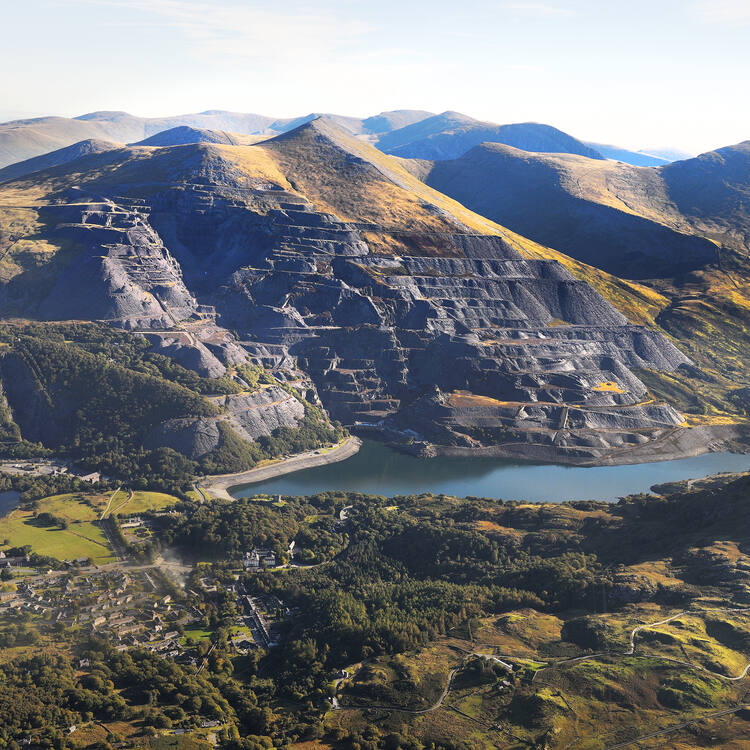
Outstanding Universal Value
Brief synthesis
The Slate Landscape of Northwest Wales is located in the United Kingdom, in the mountains of Snowdon massif. Six areas together represent an exceptional example of an industrial landscape which was profoundly shaped by quarrying and mining slate, and transporting it for national and international markets. From 1780 to 1940 this industry dominated world production of roofing slates, transforming both the environment and the communities who lived and worked here. The quarries and mines are monumental in scale, comprising stepped hillside workings, deep pits and cavernous underground chambers, massive cascading tips, ingenious water systems, and a range of industrial buildings. Outstanding technical equipment and major engineering features survive. Innovative transport systems linked quarries and processing sites with purpose-built coastal export harbours and with main-line railways. Grand country houses and estates built by leading industrialists contrast with workers’ vernacular settlements, with their characteristic chapels and churches, band-rooms, schools, libraries and meeting-places which retain multiple examples of their traditional way of life and strong minority language.
By the late 19th century, the region produced about a third of the world output of roofing slates and architectural slabs. Its use in terraced houses, factories, warehouses and elite architecture contributed to rapid global urbanization. It influenced building styles, encouraging the shallow-pitched roofs of the Georgian order. Technologies that were innovated, adopted and adapted in the property include the ingenious application of waterpower, the development of bulk handling systems and the first known application of the circular saw for cutting stone. These were diffused by specialists and by emigration of skilled Welsh quarrymen to the developing slate industries of the United States, continental Europe and Ireland. The Snowdon massif’s narrow-gauge railway systems gained global influence and were adopted from Asia and America to Africa and Australasia.
Criterion (ii) : The Slate Landscape of Northwest Wales exhibits an important interchange, particularly in the period from 1780 to 1940, on developments in architecture and technology. Slate has been quarried in the mountains of Northwest Wales since Roman times, but sustained large-scale production from the late 18th to the early 20th centuries dominated the global market as a roofing element. This led to major transcontinental developments in building and architecture. Technology, skilled workers and knowledge transfer from this cultural landscape was fundamental to the development of the slate industry of continental Europe and the United States. Moreover, its narrow-gauge railways – which remain in operation under steam today – served as the model for successive systems which contributed substantially to the social and economic development of regions in many other parts of the world.
Criterion (iv) : The Slate Landscape of Northwest Wales is an outstanding example of a stone quarrying and mining landscape which illustrates the extent of transformation of an agricultural environment during the Industrial Revolution. Massive deposits of high-quality slate defined the principal geological resource of the challenging mountainous terrain of the Snowdon massif. Their dispersed locations represent concentrated nodes of exploitation and settlement, of sustainable power generated by prolific volumes of water that was harnessed in ingenious ways, and brought into being several innovative and technically advanced railways that made their way to new coastal ports built to serve this transcontinental export trade. The property comprises the most exceptional distinct landscapes that, together, illustrate the diverse heritage of a much wider landscape that was created during the era of British industrialisation.
The property contains all of the essential elements that convey attributes of Outstanding Universal Value. Its boundaries capture the principal non-active slate-producing areas in Northwest Wales, together with their associated industrial heritage that includes the most significant processing facilities, settlements and transport routes. The protective mechanisms in place should be consistently used to strengthen the integrity of the property and its setting.
Authenticity
The well-preserved cultural landscape retains a high level of authenticity, and has experienced little intervention since the main period of industrial operation. Attributes of Outstanding Universal Value are conveyed by physical elements that are clearly identified and understood in terms of date, spatial distribution, use and function (including living communities and operational railways), form and design, materials and substance, and their interrelationships including connectivity and overall functional and compositional integrity of the series. The serial property further embodies a vibrant cultural tradition, including slate-working skills and the continued widespread use of the Welsh language. Key attributes are reflected in landscape qualities and features of quarrying including the relict working areas, tips and transport routes, together with associated settlements and social infrastructure. The historical settlements present different yet acceptable levels of authenticity, which need to be closely monitored and controlled by the management system and respective Local Management Plans.
Protection and management requirements
The serial property and its setting are afforded the highest levels of protection through the implementation of existing legislation: The Ancient Monuments and Archaeological Areas Act 1979, The Town and Country Planning Act 1990, The Planning (Listed Buildings and Conservation Areas) Act 1990, The Historic Environment (Wales) Act 2016 and through implementation of policies within the Gwynedd and Anglesey Joint Local Development Plan and Snowdonia National Park Authority Local Development Plan.
Attributes of Outstanding Universal Value have been defined and articulated in The Slate Landscape of Northwest Wales Property Management Plan which establishes the over-arching strategies and mechanisms by which the serial property will be managed. This is complemented at local level by a series of Local Management Plans, developed in collaboration with landowners, which include site-specific information and practical recommendations. Responsibility for the implementation of the Management Plan will sit with a multi-organisational Partnership Steering Group established by the lead organization, to which an appointed World Heritage Coordinator will report. All of the serial component parts of the property lie within areas of Wales that are already subject to strong levels of landscape protection through designation as a National Park and registration as Landscapes of Outstanding Historic Interest. These will serve as an added layer of protection to the setting and key views into and out of the serial property, through a strict enforcement of the statutory mechanisms in place. There is no active quarrying or mining within the serial property; mineral activity takes place in the wider protected area outside the boundaries of the serial property. The application of existing statutory management procedures will ensure this does not negatively impact upon the Outstanding Universal Value of the serial property.
- The Slate Landscape of Northwest Wales (in English only)
- Twitter account
- Instagram page
- Facebook page
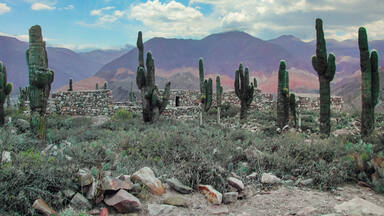
Cwmorthin, Tanygrisiau
The six areas of the UNESCO awarded Slate Landscape of Northwest Wales
Six areas in Gwynedd make up the UNESCO World Heritage Wales Slate site. These six unique communities helped roof the world and are now creating a vibrant future in the shadow of the slate.
- Eryri (Snowdonia) Mountains and Coast
- National Trust
- Trains and railways
- UNESCO Heritage
- Eryri National Park
© Hawlfraint y Goron / Crown Copyright
In July 2021 the Slate Landscape of Northwest Wales became the fourth UNESCO World Heritage Site in Wales, along with the Castles and Town Walls of King Edward I, Pontcysyllte Aqueduct and Canal and Blaenavon Industrial Landscape .
The story of Welsh Slate is significant. There is a special place in the pages of the history books of Wales for the post-industrial landscape and its communities, which have left a mark on the area, the country and the world.
Slate revolutionised the quiet, mountainous areas of North Wales. The creation of the quarries, and the rubble heaps around them, formed a new visual landscape. Vibrant cultural communities were created in these six areas, and this cultural landscape is as important today as ever.
View this post on Instagram A post shared by Llechi Cymru - Wales Slate (@llechicymru)
Dyffryn Ogwen
At one time, Penrhyn Quarry was the largest quarry in the world and slate production continues here to this day. The site of the original quarry is enormous, and one of the best ways to appreciate the scale is to glide over it on the world's fastest zip wire . The Zip World quarry tour is also an informative introduction to the history of the quarry, as well as an opportunity to enjoy views over the valley and the Menai Strait.
Penrhyn Castle was built to underline the social status of the family of industrialists who owned the quarry and is now owned by the National Trust. Despite the spectacular architecture and luxurious rooms, for many, the building represents a history of oppression and hardship. There is also a dark history attached with links to the transatlantic slave trade in Jamaica's sugar plantations .
Penrhyn Castle, Bangor, North Wales
The town of Bethesda developed into a community for the quarrymen and their families over the period, and the close-knit community atmosphere is still as strong as ever thanks to initiatives such as Partneriaeth Ogwen . The partnership works to benefit the economy, environment and communities of Dyffryn Ogwen, and includes running the local shop and community library in the town. Community and arts hub Neuadd Ogwen is host to a special programme of live events with music, theatre, comedy and literary sessions taking place regularly.
If you want to venture towards Llyn Ogwen to enjoy the circular walk with views of Tryfan and the Glyderau , it is better to park in Bethesda and catch the T10 bus up to Cwm Idwal or the Bws Ogwen service - a 9-seater electric bus that runs from Bethesda to Llyn Ogwen. This is another Partneriaeth Ogwen initiative, with the aim of reducing Eryri (Snowdonia) National Park's carbon emissions and getting more visitors to support local businesses in Bethesda when visiting the area.
To learn more about the area’s industrial history follow The Slate Trail along the Lôn Las Ogwen route. Interpretation panels and QR codes have been installed along the route and the information is also available in pdf format . A recent development is the new centre in Nant Ffrancon with interactive interpretation facilities, information and refreshments.
Bethesda and Penrhyn Quarry, North Wales
© Hawlfraint y Goron CBHC / Crown Copyright RCAHMW
Dinorwig Quarry
The Dinorwig Quarry area is particularly beautiful. Yr Wyddfa (Snowdon) is a stone’s throw away, along with the lakes of Padarn and Peris, and Dolbadarn Castle keeping a watchful eye over the valley below since the 13th century.
Amgueddfa Lechi Cymru (The National Slate Museum) in Llanberis, at the foot of Dinorwig Quarry, is at the heart of the area. For half a century it has been reciting and recording the stories of the Welsh slate industry in the Victorian workshops of the old quarry. Here, you can travel back in history to see a way of life that is now an integral part of Wales' identity. Make sure you catch one of the demos with the talented craftsmen who show off their slate splitting skills.
The National Slate Museum, Llanberis, North Wales
© Hawlfraint y Goron CBHC / Crown Copyright RCAHMW
From water sports to walking to wildlife, nearby Llyn Padarn Country Park has it all. Ropeworks adventure centre offers fun experiences for individuals, families and large groups who are brave enough to venture on the high ropes course, and Boulder Adventures offers water experiences such as kayaking, gorge scrambling and canoeing.
Over the Easter and summer holidays the old Quarry Hospital above Llyn Padarn opens as a museum, offering the opportunity to see medical equipment, an operating room, an original X-ray machine and various eerie gadgets from the 19th century.
In the 1840s a railway was built along the shores of Llyn Padarn - the first in this quarry landscape to use steam engines. Today Llanberis Lake Railway celebrates half a century of visitor train journeys, and organises a number of seasonal events for the family including Halloween tours .
Another train to catch in the area is, of course, the Snowdon Mountain Railway . The railway and summit café Hafod Eryri is open from April until the end of October.
Llanberis is extremely popular and busy during the holidays, but if you’re lucky enough to grab a table at the Pantri on the village’s high street you’ll be treated to a good selection of local food. A stone's throw from Llanberis is Caban in Brynrefail - a social co-operative with an art gallery and cafe selling the best of local produce including fruit and veg and honey from the community garden. Another great place to buy local produce is the Menter Fachwen shop on the high street in Llanberis, which sells a good selection of cakes and homemade jam, Coffi Eryri , has a great supply of local beers including Bragdy Lleu , a brewery in Dyffryn Nantlle that names each beer after the characters of the Mabinogi, and the locally distilled Blue Slate Gin .
View this post on Instagram A post shared by Caffi Caban (@cafficaban)
Dyffryn Nantlle
Dyffryn Nantlle is an area with a long and varied archaeological history. Topography and geology have meant that quarries have been confined within very limited areas. But a great way to explore the area is to follow the Bro Nantlle Slate Walks . There are five walks in total, including through the village of Rhosgadfan, the childhood home of Kate Roberts - one of Wales’ most important Welsh writers of the 20th century, and commonly known as Brenhines ein Llên (Queen of Our Literature). Her work reflects on the struggles of quarrying communities, often through the eyes of a child.
The Dyffryn Nantlle landscape, North Wales
Pant Du vineyard and orchard is located on the slopes of Dyffryn Nantlle - the first vineyard in Wales to run off solar energy. If you're visiting between June and September make sure you join one of owner Richard Huws' entertaining and informative guided tours, to hear the stories and challenges of running a vineyard on the slopes of the valley - and book a table in the restaurant afterwards to enjoy a local meal and a taste of the wine and cider produced at the site.
Yr Orsaf in Penygroes is a unique community initiative which aims to develop the creative and digital skills of the residents of the area, as well as offering a place to meet for a drink and a meal. There are gigs, poetry and film evenings too. The old building, once a thriving high street shop, was saved by a group of volunteers in 2016, and a committee called Siop Griffiths Cyf was established to ensure that the historic building remains in the hands of the community.
Poblado , one of Wales' main coffee artisans are based in Dyffryn Nantlle and roast in the old quarrymen's barracks in Nantlle. Poblado's social vision is as strong as their coffee, and the coffee afternoons and live music, Bandiau'r Rhosty, are extremely popular.
View this post on Instagram A post shared by Poblado Coffi (@poblado_coffi)
Gorseddau and Bwlch y Ddwy Elor
The Gorseddau and Bwlch y Ddwy Elor quarries were developed in Cwmystradllyn and Cwm Pennant between 1850 and 1870 - the 'Golden Age' of the slate industry in Gwynedd. There was a significant investment in both quarries, but due to the poor quality of the rock, the investment never materialised into slate production. Local people however take pride in both quarries, and it is this, along with the care of Eryri (Snowdonia) National Park , that has assured the remarkable survival of archaeological evidence here.
Ynysypandy Slate Mill is one of the most iconic buildings in the area. It is an imposing building, inspired by foundry design, reflecting the background of its investors. It still sits grandly in the midst of mountains and is a popular spot for walks incorporating tea stops at Tyddyn Mawr Tea Room .
Ynysypandy Slate Mill, North Wales
Ffestiniog and Porthmadog
Blaenau Ffestiniog - 'the capital city of slate' and 'the town that roofed the world' - is now one of the best outdoor activity hubs in Wales.
The external remains of the quarries are very impressive, but so much of Blaenau's history is hidden underground. Inclines, networks of railways and machines of all kinds have survived and it is possible to catch a glimpse of them at Zip World Llechwedd on the Deep Mine Tour , while jumping on Bounce Below trampolines , or playing underground golf .
Antur Stiniog is a world-class mountain biking centre with 14 downhill mountain bike trails, graded from green to black, for riders of all abilities. And for those who prefer to dart above the mounds rather than down them, you can also discover Llechwedd’s quarries from 1,400 feet above .
Antur Stiniog and Zip World Llechwedd, Blaenau Ffestiniog, North Wales
For a slightly more relaxed outdoor adventure the Bro Ffestiniog Slate Walks are a series of nine trips including Cwmorthin and Llan Ffestiniog.
Plas Tan y Bwlch is not too far away, but a very different world. This was the home of the owners of the Oakeley Quarry. It is now owned by Eryri (Snowdonia) National Park and it is possible to stay overnight or hire a room for a meeting or event.
From Porthmadog harbour, ships transported Blaenau Ffestiniog slate across the world. The ships were built in Porthmadog, and the locals were crewmen. The town's Maritime Museum tells the story of the time, and the harbour is popular today as a mooring for yachts and leisure boats.
Connecting ‘Stiniog’ and ‘Port’ is the Ffestiniog & Welsh Highland Railway . After travelling over the Cob and the Glaslyn estuary the 13.5 mile journey winds through mountains and forests, past lakes and waterfalls.
Read More : A stroll through Stiniog
Abergynolwyn and Tywyn
This area in south Gwynedd is far from Bethesda, Llanberis, Nantlle and Blaenau Ffestiniog, which shows the importance of the slate industry throughout the region. Farming, forestry, and pretty seaside villages and towns are the main features of the area today . But slate was also important at one time, and the industry has left its mark, mainly via the railway tracks.
Rheilffordd Talyllyn Railway was the first railway in the world to be successfully saved and operated by volunteers as a visitor attraction in 1951. The narrow gauge line was built to serve Bryneglwys Quarry above Abergynolwyn. The two original engines, 'Talyllyn' and 'Dolgoch', are still in use, travelling through the scenic Fathew Valley. They also organise special seasonal events such as train rides with Santa and the Slate Trail - a unique experience where you can learn about the rich history of the railway, Bryneglwys Quarry, and its part in the Slate Landscape of Northwest Wales UNESCO World Heritage Site. Head to the Natural Resources Wales website for information about visiting Bryneglwys Quarry .
Read More : A local's guide to exploring Tywyn
View this post on Instagram A post shared by Rheilffordd Talyllyn Railway (@talyllynrailway)
Snowdonia Slate Trail
Inspired to explore and discover the Slate Landscape of Northwest Wales? The 83-mile Snowdonia Slate Trail is a great place to start. The full journey can be walked in a week, or sections can be broken into smaller journeys. Remember to collect stamps at specific points along the way to put in the Snowdonia Slate Trail Passport , to be exchanged for a Slate Trail medal after finishing the journey.
Visitor safety
The Slate Landscape of Northwest Wales is undoubtedly fascinating but can be remote, dangerous and challenging. A significant proportion of the landscape is within private ownership, and no public access is permitted.
Before you set off to explore, check if you’re allowed to access the site and have the right equipment, knowledge and skills. Visit the Adventure Smart UK website for advice on how to enjoy your visit safely.
For more information about the history and heritage of the Northwest Slate Landscape visit the Wales Slate website .
For more inspiration about the region around the Wales Slate area head over to the Visit Eryri (Snowdonia) website .
Dinorwig Slate Quarry, North Wales
© Hawlfraint y Goron CBHC / Crown Copyright RCAHMW
Related stories
A stroll through stiniog.
Discover the colour and the warmth beneath the blue-grey slate of Blaenau Ffestiniog.
Adrenaline-pumping adventure in North Wales
Enjoy a two day mountain biking and zip-lining adventure in Blaenau Ffestiniog.
Imagine flying 500ft up at 100 mph...
Take on the world’s fastest zip line - check out the Zip World sites in stunning Eryri.
Explore the culture and countryside of Bangor
Set between soaring mountains and sparkling sea, Bangor offers heaps to do in a spectacular setting
- Historic buildings
- City / Town

Before you start...
This site uses animations - they can be turned off.
Terms and Conditions
By using this site, you confirm you agree to our Terms and Conditions .
We'd Like to Hear From You
By answering a few questions , we'll give you the chance to win £500. By doing so you will also help us improve this website and help with your holiday planning and travel needs.
Good for you. Good for us. Teamwork!
- National Slate Museum
- 中文
- Español
- Français
- Get Involved
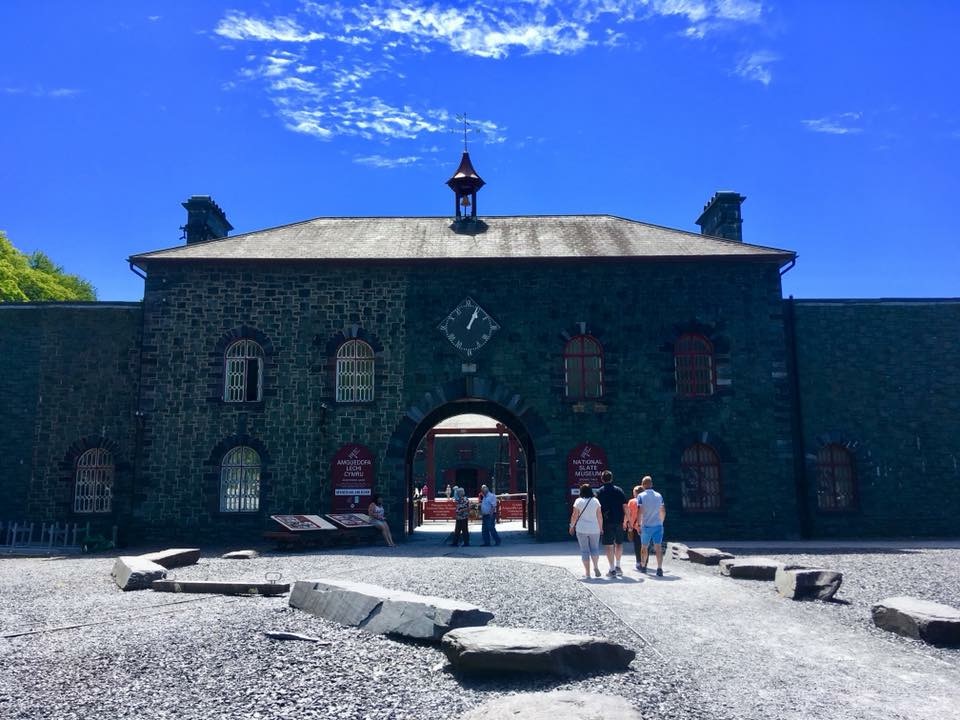
The heart of Welsh industry at The National Slate Museum
Dinorwig Quarry closed in 1969. Today, rather than fashioning wagons and forging rails, the workshops tell a very special story: the story of the Welsh slate industry.
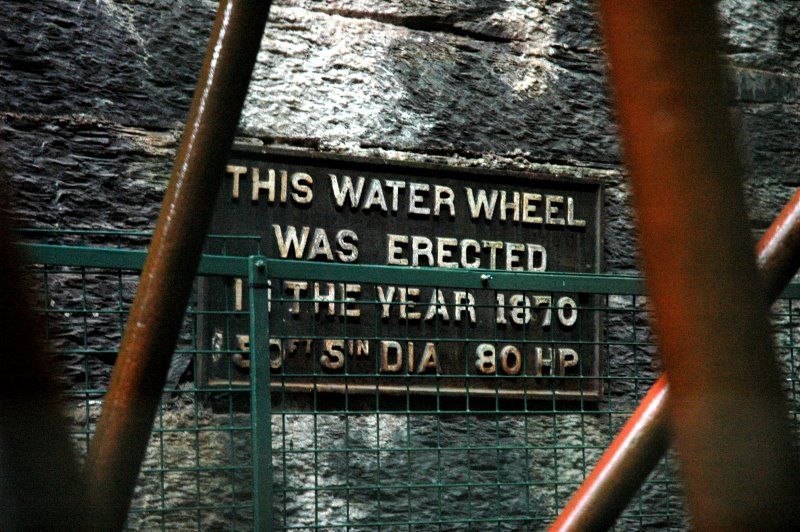
The National Slate Museum is located in the Victorian workshops built in the shadow of Elidir mountain, site of the vast Dinorwig quarry.
Here you can travel into the past of an industry and a way of life that has chiselled itself into the very being of this country.
The Workshops and Buildings are designed as though quarrymen and engineers have just put down their tools and left the courtyard for home, while an array of Talks and Demonstrations including slate-splitting give you a real insight into quarry life.
Workshops and Buildings Talks and Demonstrations
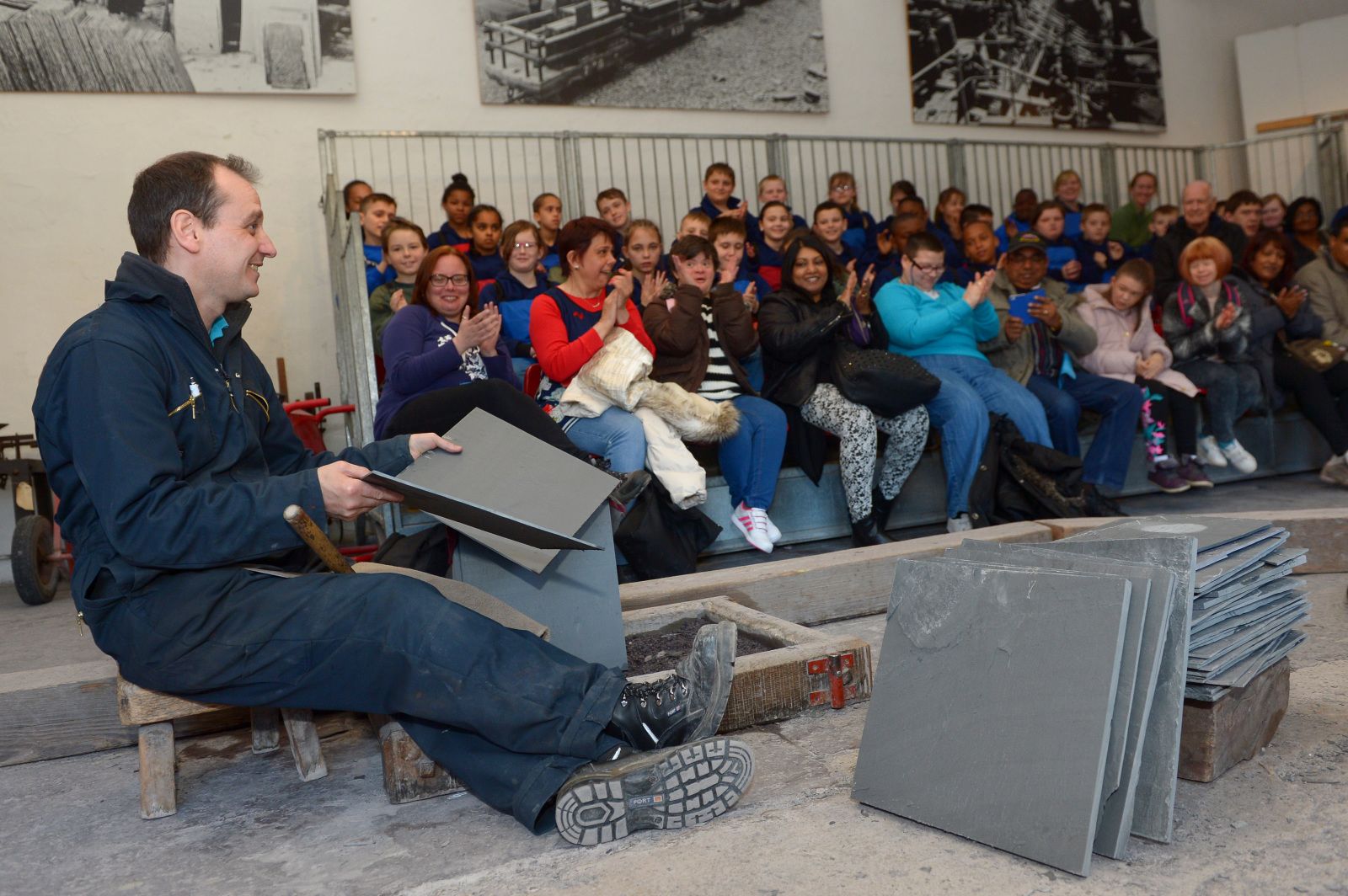
You'll hear the gripping Story of Slate , encompassing such great events as industrial unrest on the one hand, and the small details of everyday life on the other.
Story of Slate
Fron Haul recaptures significant periods from the slate industry with a row of quarrymen's houses on the museum site. Strikes and suffering, craftsmanship and community: all the drama of real people's lives.
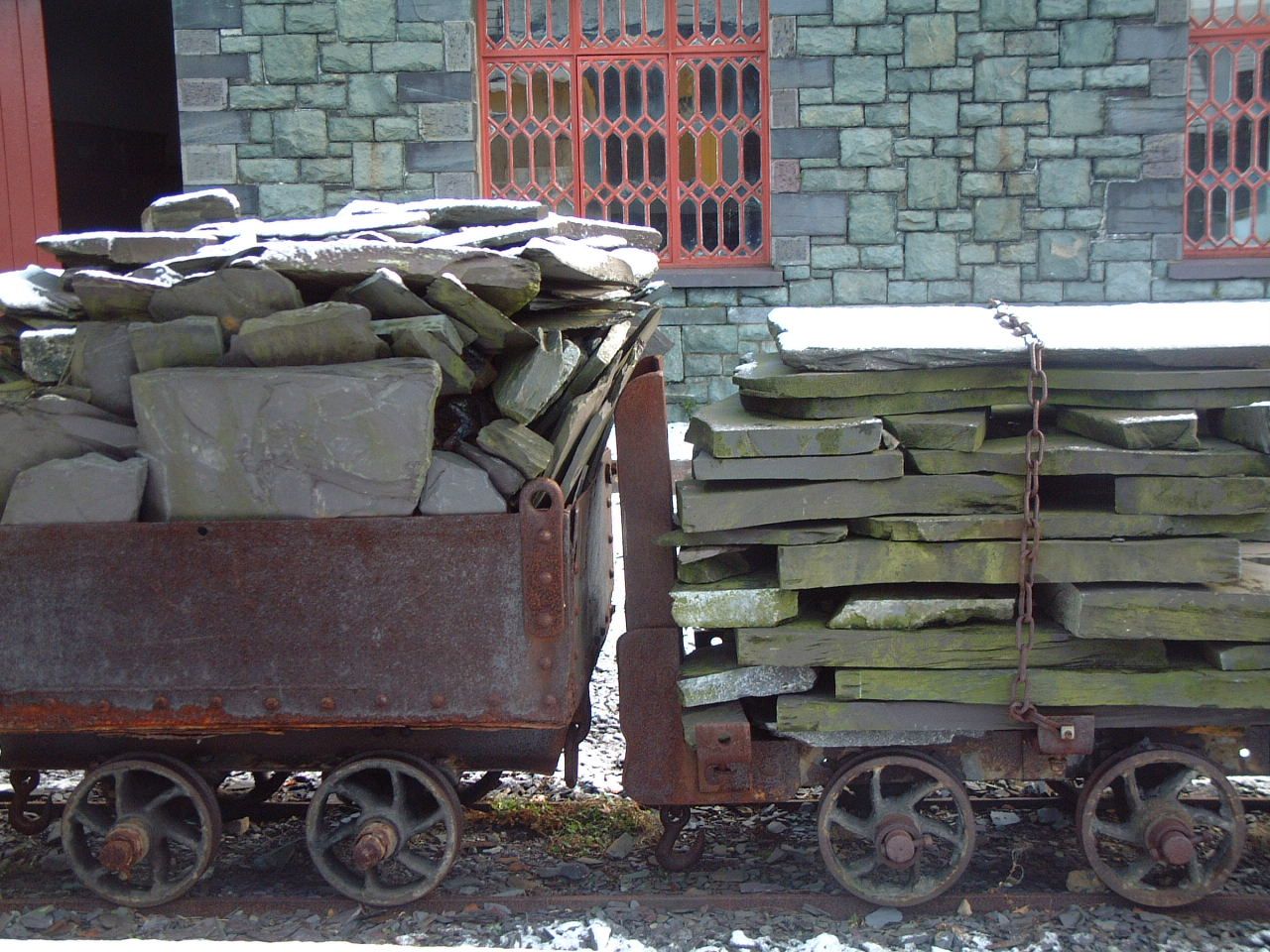
Now, with imaginative interpretation, the remarkable relics of the slate industry can be understood and enjoyed by the many thousands of visitors to this stunning countryside, on the flanks of Snowdon.
A day full of enjoyment and education awaits in a dramatically beautiful landscape on the shores of Llyn Padarn, and at the terminus of the Llanberis Lake Railway, one of the 'Great Little Trains of Wales', which runs along the waters port shoreline.
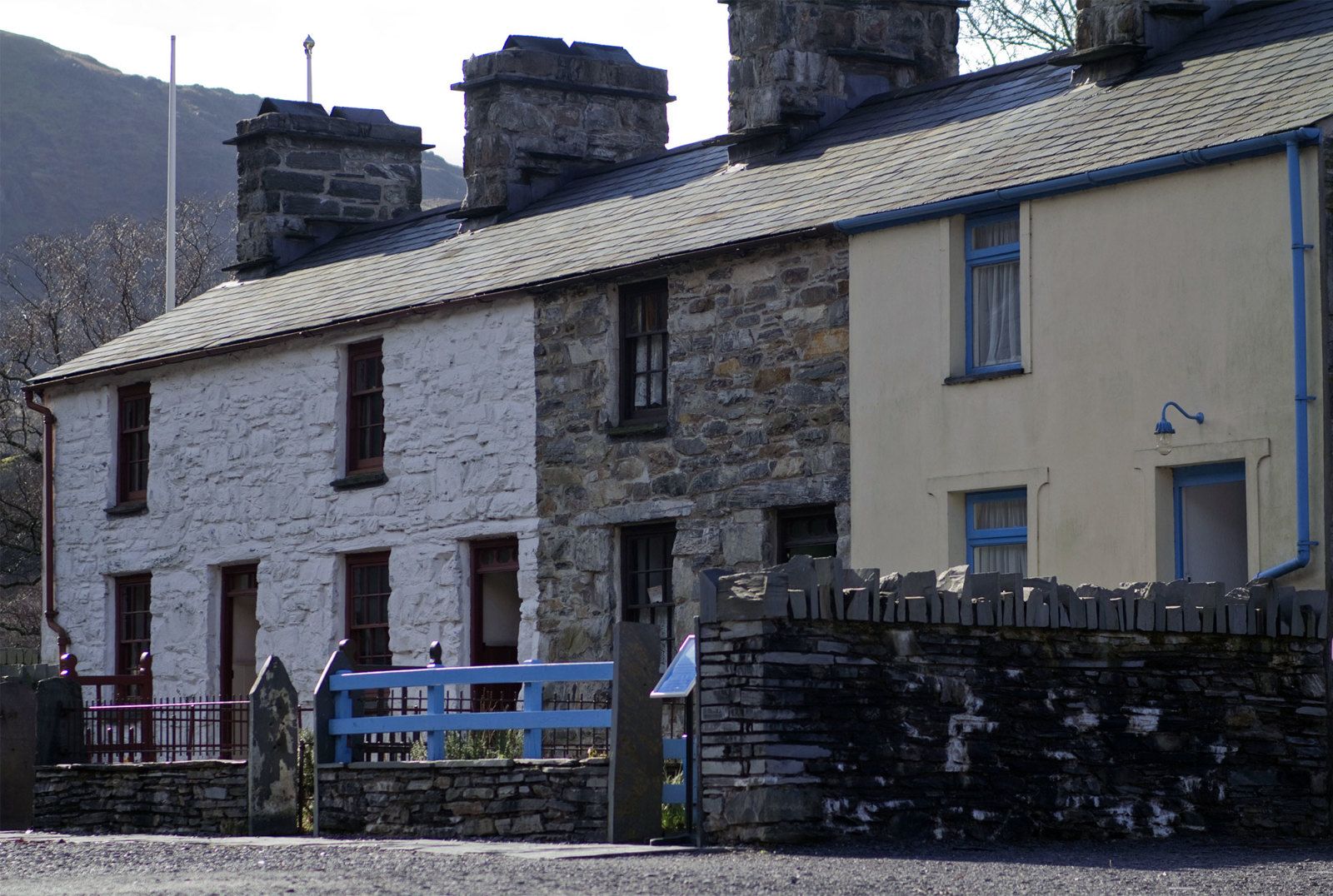
The Museum originally opened to the public in 1972. Many of the sites former quarrymen and engineers were employed to present their craft, while equipment was collected from other Welsh quarries.
In later years the quarry's incline was restore to its former glory, and the Museum re-opened in 1999 with new unique features and facilities.
Visit the Museum
See What's On at the National Slate Museum
Plan Your Visit

A walk to the Dinorwic Slate Quarry from Llanberis
The slate landscape of wales.
Travelling through Snowdonia, set amongst the rugged mountain peaks and glistening lakes you’ll find walls of grey blue slate scattered around the landscape. North West Wales was at the forefront of the slate industry for much of the 19th century, with Wales’ slate exported around the globe. The largest areas producing slate in the area were Penrhyn Quarry, Bleanau Ffestiniog and Dinorwic Quarry in Llanberis. Head to any of these areas and the landscapes are dramatic. Towering mountains of slate left behind from the production days. Some of the old derelict buildings remain in place, making the areas fantastic to explore, which is why I recently took a Llanberis walk to the Dinorwic Slate Quarry.

A view of Snowdon from Dinorwic Slate Quarry
UNESCO WORLD HERITAGE STATUS
The slate industry has played a large part in the cultural identity of North Wales, and the Wales’ Slate Landscape has been designated with UNESCO World Heritage Site status in July 2021. The status has been granted to “recognise the region’s 1,800 year history of slate mining, its people and culture, and its role in roofing the nineteenth-century world”. As well as this, there is recognition for the landscapes themselves, which have been dramatically changed over the years, and well as the craftsmanship, the culture and use of the Welsh language.
A WALK TO THE DINORWIC SLATE QUARRY FROM LLANBERIS
The second largest slate quarry in Wales, Dinorwic Slate Quarry was in operation from the 1770’s. At one point, the quarry employed more than 3000 men, a number which declined during the 20th century, until it finally closed in 1969. Located on the outskirts of Llanberis, it’s a great area to explore with many well marked trails leading around the quarry site.

The entrance to the Dinorwic Slate Quarry footpath
An ideal starting point for exploring the quarry is the Padarn Country Park Car Park. The car park is located next the NATIONAL SLATE MUSEUM , which incidentally is housed within the original workshop of the quarry at Gilfach Ddu. From the National Slate Museum, heading back towards the main road and mini roundabout, the entrance to the footpath is on the left between two slate walls. The pathway leads into the woodland before taking a right turn, where the trail becomes steeper. At this point, a series of metal stairways and slate steps lead uphill into the woods. It’s a fairly steep climb, with a lot of uneven slate steps so it’s important to be careful underfoot.

Woodland slate steps

Dinorwic Slate Quarry footpath through the woodland
Heading higher into the woodland, the steps finally lead to another section of pathway between two large slate walls. This is known as the zig zag path and unsurprisingly, zig zag’s it’s way up the side of a large slate heap on the side of the mountain. From this point, you get fantastic views across Llyn Padarn, Dolbadarn Castle and the mountains of Snowdonia including Snowdon itself on a clear day. The scenery is quite breathtaking.

Looking down from the zig zag path

Snowdon views from the zig zag path
The end of the zig zag path leads across an old metal bridge next to the derelict remains of a cable brake house on the quarry. To the right of here, the first signs of the old quarry buildings appear with the stunning Snowdon backdrop. There is a pathway that leads to the right at this point, which heads up the incline where the old tracks can still be seen on the ground.

Footpath leading to the cable incline
Rather than taking the right turn, carrying on straight ahead from the metal bridge, the pathway leads back into the woodland and climbs up the mountain side to reach one of the best viewpoints of the entire quarry.
ANGLESEY BARRACKS
A few minutes walk into this next section of woodland, and there’s a split in the path, where the right turn leads out to the spectacular ruins of Anglesey Barracks which can be seen through the trees. Before taking this turn though, continue a few steps further along the pathway straight ahead, which will lead to the top of a mound where there is an incredible view of the buildings.

Anglesey Barracks from the woodland
Anglesey Barracks, for those who are wondering, are two rows of eleven cottages located on the hillside just outside the main quarry. The houses were built in the 1870’s and provided housing for the quarrymen who lived too far a distance to go home each night. These men would stay at the barracks during the week and travel home at weekend.

Walking through Anglesey Barracks

Ruins of a cottage at Anglesey Barracks
Each cottage at Anglesey Barracks was made up of two rooms. The door would open into a living room area with a single window and a fire place, with a door then leading through to a small bedroom. The cottages had no running water, electricity and very little furniture. It’s understood that up to four men would stay in each cottage, which would certainly have been very cramped. This way of life for the long distance quarrymen continued until 1948, when a health and safety inspection condemned the barracks as unfit for human habitation. Both rows of buildings, although derelict and without roofs still stand today and are a fascinating insight into the working way of life for these quarrymen.

Mountain and castle views from Anglesey Barracks
VIEWS FROM THE SLATE HEAPS OF DINORWIC SLATE QUARRY
Passing through Anglesey Barracks, the pathway leads across the cable incline and onto one of the large slate heaps. There are many further derelict quarry buildings located on this large section of land, which is great to explore and provides amazing views over Snowdon, Llyn Peris and the main galleries of the Dinorwic Slate Quarry.

Derelict slate building at Dinorwic Slate Quarry
I always enjoy (carefully) exploring abandoned buildings and landscapes, mainly as it’s fascinating to see how nature has reclaimed the areas. High on these windswept slate mountains, trees area growing through the slate, gripping onto the mountain side with their powerful roots. Alpine plants and flowers have provided a carpet of colour underfoot. Nature always wins.

Alpine plants growing through the slate

View from the top of the slate heaps
Looking across to the main section of the quarry itself, the massive scale of the work that took place here is apparently. Row upon row of balconies carved into the mountain stand tall, and again, nature is taking over. Trees that look tiny in scale, are growing on this landscape which looks completely uninhabitable for anything.

Nature reclaiming the landscape at Dinorwic Slate Quarry
OTHER AREAS TO EXPLORE THE SLATE LANDSCAPES OF WALES
As well as the Anglesey Barracks walk, there are plenty of further routes and trails which lead much higher into the Dinorwic Slate Quarry. There is a bus terminus higher up the mountain near the village of Dinorwig, which leads to further footpaths to some fantastic viewpoints. Next to the main quarry, Vivian Quarry, which can be seen directly behind the Llyn Padarn Country Park Car Park, is popular for rock climbers. It’s also a popular spot for divers, with a fantastic dive site in the lake below which has great visibility underwater and submerged buildings to explore.

Another popular spot in the region is Penrhyn Quarry – the largest of the quarry sites in the North Wales, which is now home to ZIP WORLD and the fastest zip line in the world. Finally, the area surrounding the town of Blaenau Ffestiniog has a rich history of slate works. Llechwedd Slate Mine offers tours around the underground caverns of the old mine, along with jeep tours of the quarry itself. The quarry tours are operated by Zip World which also operate a zip line on site, as well as a large underground trampoline experience in the caverns. Llechwedd also offer accommodation including a hotel ( PLAS WEUNYDD ) and a safari tent glamping which you can read about below. Staying over provides more time to explore the slate landscape of the surrounding area. It’s worth it.
READ ALL ABOUT MY NIGHT UNDER CANVAS AT LLECHWEDD SLATE MINES

Wales’ Slate Landscape views from the Llechwedd glamping site
Have you visited Wales’ Slate Landscape? Leave a message in the comments box below with your stories.
For regular photo updates on my travels, follow my account on Instagram .
If you enjoyed this article and found it useful, Pin one of the images below to Pinterest .
Scroll down on mobile, or check in the sidebar on desktop to subscribe and get new post alerts directly to your inbox.

Share this:
- Click to share on Twitter (Opens in new window)
- Click to share on Facebook (Opens in new window)
- Click to share on Pinterest (Opens in new window)
About Dylan Jones
You might also like....

The Rocks at Plas Curig: A stay at the only 5* hostel in Snowdonia

Northern Lights Village Saariselka: Staying in an Aurora Cabin

A tour of Gwinllan Conwy and their award winning Welsh wines
13 comments.
Colin and Mitch - Very Tasty World
We’ve visited Snowdonia and the Dinorwig power station in the past but were unaware of the Dinorwic slate quarry. It looks stunningly beautiful – and is most definitely on the list for when we next visit Wales. Thank you for sharing this.
What a great blog about an amazing area of Wales. We visited in 2019 and had the opportunity to visit the Llechwedd Deep Mine Tour for an introduction to the quarry industry. People traveling to Wales NEED to include the slate quarry area on the itinerary. THXS for posting.
Emily / The Grown Up Gap Year
What a fascinating walk. I love that it combines the important history of Wales and its beautiful landscapes. Will definitely add this to my Wales wishlist!
I visited Llanberis two weeks ago! First time in this area and we loved it. We saw some of the slate mines from a distance but did not have time to visit on this occasion (-had to climb Snowdon!). This looks fascinating and the history is really interesting. Already planning a return visit so this is definitely on the agenda.
[email protected]
This is so intriguing and beautiful! I would love to take a walk to the Dinorwic Slate Quarry from Llanberis. Love historic sites like this!
This Wales Slate landscape certainly deserves its UNESCO status. It’s absolutely stunning! I’d love to do the quarry footpath and to see the abandoned cottages. Not sure how 4 men would fit in there though… 🙂
THE SLATE LANDSCAPE OF WALES – a kingdom lost and found. I could see myself walking down the historic path and unravel the story behind. Definitely deserves its UNESCO title 😉
Regan Thacker
What an amazing place to visit, and not one I have seen previously. Thanks for sharing, I hope to visit sometime in the future.
Ferne Arfin
What amazing views. On a visit to Snowdonia a few years ago we drove through Blaenau Ffestiniog on a grim and overcast day with the slate heaps glistening slickly and evilly. I found the atmosphere very intimidating. Now, with my wonky knees, I would not be able to do the walks so I will have to enjoy your photos instead. Thanks.
Jen Nilsson
These pictures are unreal! This hike is going on the list!
I never heard of the slate region of Wales. That walk is right up my street, with a good combo of ruins, and views. The village looks extraordinary. I’m bookmarking this for when I finally get to Wales. It’s very far.
Andrew Reece
What a fantastic place to visit, I’ve been up there twice and the views are superb, the buildings hold so much history, we made a film in 2017 for are YouTube channel and used lots of the buildings and equipment that has been abandoned, and again last week we visited it again to shoot our second film, so much to see we never tire of filming. If you would like to see our 2017 film visit our YouTube channel, HiLo Visuals and look for Dinorwic slate mine
Adventures in the mountains | crohniecassie
[…] Sean, Ryan and I planned to climb Snowdon back in 2019 when we holiday’d in Wales. Weather conditions made it too dangerous to climb on the day we’d planned and we ended up walking a trail around the old slate mines along the base instead. This walk was epic and so enjoyable. In hindsight I’m not sure inexperienced us and a 11 year old Ryan would have made the summit at that time! This covers roughly the route we took https://www.shootfromthetrip.com/walk-dinorwic-slate-quarry-llanberis/ […]
Leave a Reply Cancel Reply
Notify me of follow-up comments by email.
Notify me of new posts by email.
Copyright 2020 Shoot from the Trip. All Rights Reserved.

The Home of Adventure
Choose your adventure, santa’s secret grotto, honister gift vouchers, via ferrata xtreme, climb the mine, the infinity bridge, via ferrata classic, adrenaline pass, all day pass, welcome to honister.
Located on an iconic mountain pass in the heart of the Lake District National Park, Cumbria, Honister is England’s last working slate mine and home to some of the most unique adventure activities you’ll find in the UK. Alongside our production of stunning Westmorland Green slate that dates back over 450 million years, we also offer our visitors the chance to take part in fun family adventure activities on our sprawling grounds.
From guided mine tours, where you can explore deep underground and learn about the fascinating world of slate mining, to heart-racing adrenaline activities like Via Ferrata , Cliff Camping , Climb the Mine and Canyoning , we have a selection of activities to suit all ages and abilities. Our range of Lake District adventures are ideal for friend groups, families, students, teams and other organisations.
Our expert Guides will accompany you every step of the way, whether you’re an experienced adventurer or just starting out. Here at Honister, we prioritise your safety and wellbeing and are committed to ensuring you have a fun and exciting adventure.
No matter what you choose to do at Honister, you’re sure to have a memorable experience with our all-weather adventure activities. Whether you’re looking for an exciting family day out or a unique team building experience, we can tailor our outdoor activities to meet the needs of your group.
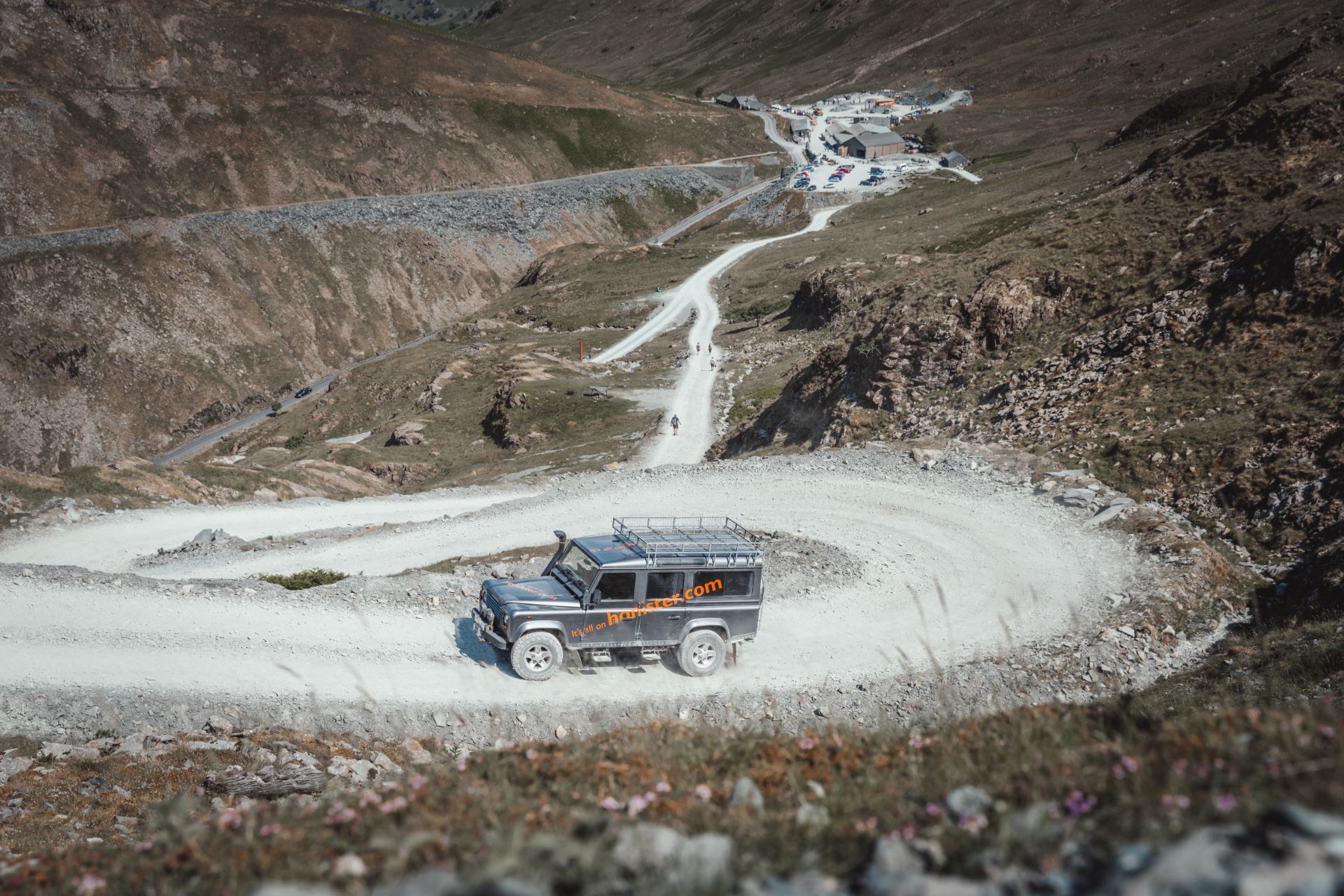
The Ultimate Guide to the Best Summer Holiday Destinations for Families in 2024

Things to do in Keswick
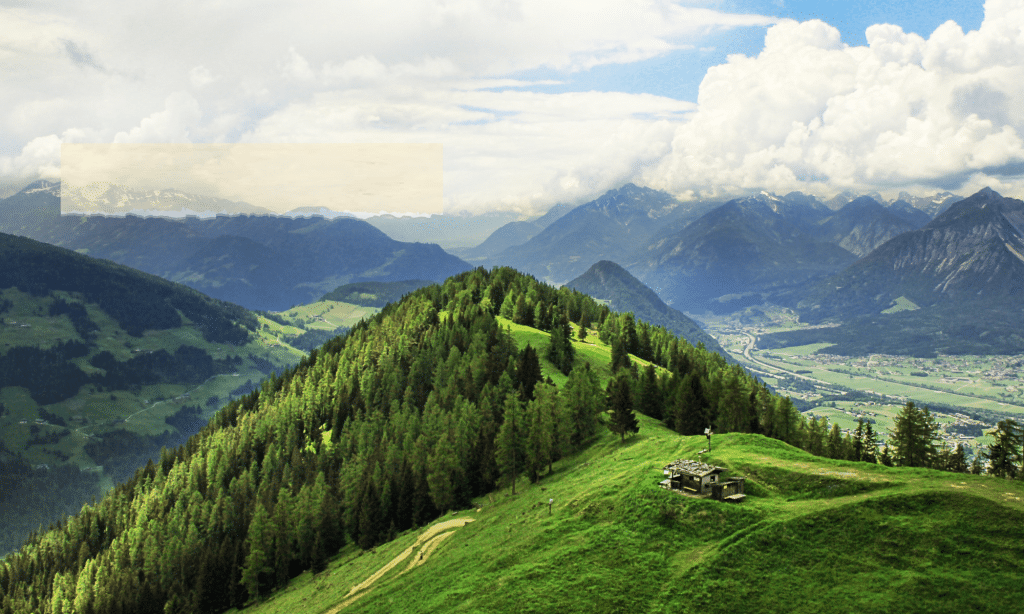
Exploring Borrowdale: A Hidden Gem in the Lake District
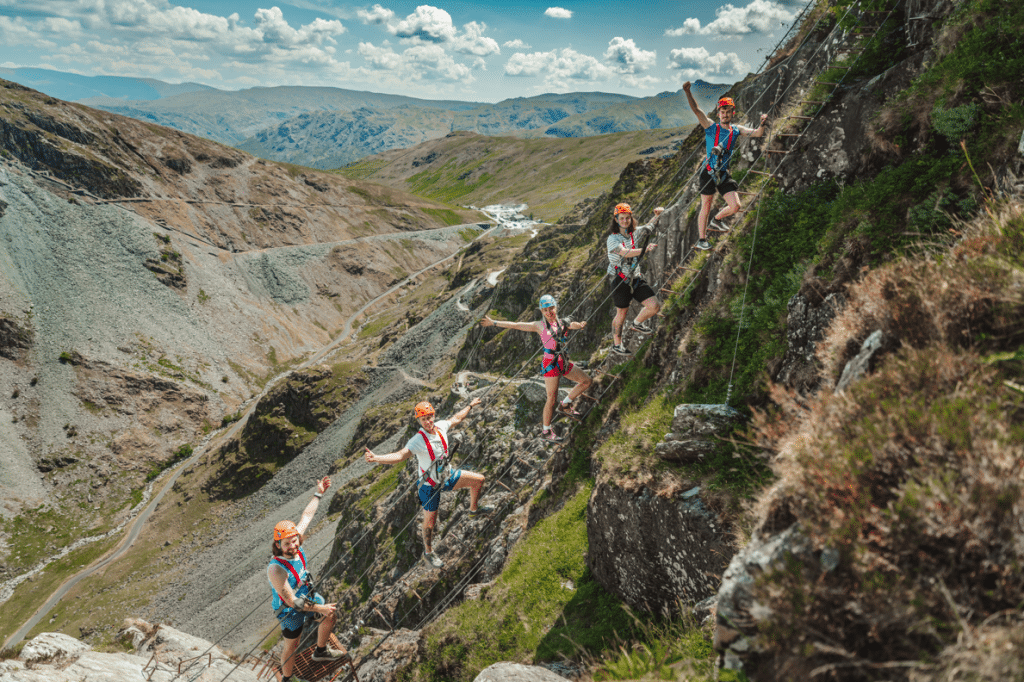
Easter Break Holiday Deals: Experience Adventure in the Heart of the Lake District
As seen on:.

Copyright 2023 honister.com | eCommerce web design from kcs company registration number 0490270 | privacy policy
Betws-y-Coed & Snowdonia
Llechwedd Slate Caverns.
Things to See
Discover the unique heritage of Welsh Slate
Llechwedd Slate Caverns of Blaenau Ffestiniog is part of a living, working slate mine still being worked to this day by Greaves Welsh Slate - since 1836. We offer 2 unique underground tours that take you deep underground to explore the world of the Victorian slate miner. The temperature underground is an ambient 54F making the caverns ideal for a family day out - come rain or shine. Plenty of all year surface facilities to enjoy - shop, cafe, slate workshop (with daily demonstrations) plus the Victorian Village (April-September) with its traditional tavern and old fashioned sweet shop.
The Deep Mine Tour: Descend deep underground and be guided on foot via ten "sound and light" sequences. Experience the unforgettable beauty of the underground lake as the story of the slate miner's life unfolds.
The Miners' Tramway Tour: Ride on a train into a network of spectacular cathedral high manmade chambers. This is a guided tour and at various points you will learn of the skills needed to extract slate, and to experience for yourself the sights and sounds of late nineteenth century mining conditions.
Llechwedd Victorian Village Visit the Slate Workshop located in the Old Mill, where Housenames/numbers are made to order. Try some local ale at the Miners' Arms and enjoy the magnificent view from the Beer Garden. Ffestin's sweet shop is a must. Wall to wall jars of traditional sweets and old fashioned favourites. Visit the village Bank and exchange some new money for old. We have our own coins that can be spent anywhere in the village or kept as a souvenir of your visit to Llechwedd. The Victorian Village is open from March to October - the Slate Workshop is open throughout the year.
Located beside the A470 just north of the town of Blaenau Ffestiniog. LL41 3NB Easy Access and Free Parking.
For further information please visit the website link.
Beautiful Snowdonia and North Wales
News & Useful Info
A 10% discount is available on a "Family Ticket" on the Combined tour only. Group discount available (15+) on the tours only.
Adult £2.00 Children £1.00 Seniors £1.50 One Tour: Adults £8.00 Children £6.90 Seniors £7.45 Both Tours: Adults £14.30 Children £11.10 Seniors £13.25
First tour 10.15am. The last tour 5.15pm March - Sept and 4.15pm Oct - Feb
Michael Bewick
Llechwedd Slate Mines Blaenau Ffestiniog Gwynedd LL41 3NB United Kingdom
Tel : 01766 830 306
Check availability and book online
Map Available
Our Website
2480 click throughs, 14407 views since start of 2024
{{messages[0].title}}

Medical Restrictions
Rydyn ni wrthi'n cyfieithu ein gwefan newydd ar hyn o bryd. Dewch yn Ôl yn fuan i weld y fersiwn Gymraeg.

experience adventure at Llechwedd
Home to a wealth of North Wales slate mining history, Llechwedd now houses world-first underground and above-ground adventures. With views across Snowdonia from the top of Titan, where you can zip 1080m from half the height of Snowdon to the world’s only subterranean playground of its kind, Bounce Below, and Caverns, the most incredible underground adventure zip line and adventure course – there is something for everyone in all weathers.
6 adventures at this location
Unlock yours, underground golf.

Bounce Below

Deep Mine Tour

Zip World Llechwedd

What is a Summit site?
Unlock your full potential at a Zip World Summit site; from the world’s fastest zip line, to the UK’s only underground bouncy playground, the ultimate experience awaits on our world-class Summit sites; the best-of-the-best when it comes to unique, extraordinary adventure activities, restaurants and facilities.
Step into a whole new world and soak up the stunning locations, some of which are based in world-heritage status areas, and enjoy the thrill of adventure in a breath-taking space you’ve never before experienced. Unlock your potential and push yourself to embark on a truly epic, memorable adventure that will leave you feeling accomplished. Enjoy everything the site has to offer, including exceptional food and beverage options, comfortable facilities, and WiFi.
Where are we?
The Slate Caverns includes an experience for almost everyone, from Titan, the first 4 person zip line in Europe to the unique, all weather underground adventures that are Bounce Below and Zip World Caverns.
Zip World Llechwedd Blaenau Ffestiniog, LL41 3NB
Play, eat, drink
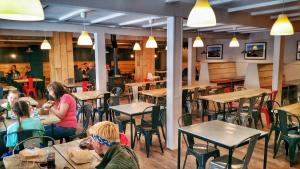
Llechwedd Cafe
If you’ve been underground or flying over the mountains you’ll need something to eat or drink. Pop over to our cafe for fresh local food, such as tasty burgers or crisp fresh salads.
Zipworld’s Titan, Bounce Below and Caverns are a must do for a fab, fun day out!!
Highly recommend visiting Zipworld at their Slate Caverns site! We booked in all 3 activities on a bank holiday and we were there for the whole day: Titan, Bounce Below and Caverns we completed in one. Visiting with friends meant we spent the whole day laughing but also challenging ourselves with heights and obstacles, especially on the Caverns tour. The staff were incredible; so polite and helpful. After Titan we were so excited to see our videos but were told they may have not worked. Matthew kindly double checked the systems and found all our videos and photos for us, reassuring us they were there and continued to explain how to download these- definitely a good memento for the day! Fab videos! With checking into each activity beforehand, Jake was lovely to us, making sure we were in the right place at the right time, he helped us with lockers and tips for what would be best to wear etc. Both Matthew and Jake gave us a lovely customer experience throughout the day and made our adventure at Zipworld very memorable, making sure we all had fun. Thank you to Matthew and Jake for making our adventure one to remember!!
Thrilling, nerve racking, fantastic!
Absolutely amazing experience. The caverns are huge, the route challenging and the zips exhillerating. You're given gloves and a very good lesson on how to use the equipment, then off you go... enjoy!
Great fun on Titan zip wire
The Titan Zip Wire consists of three lines, each a short walk apart. You ascend the mountain by mini bus for the first line. This offers amazing panoramas across the valleys, the second is faster over looking the mines and the last comes back into the Zip World site. Great for families as you can have four people descend at the same time. Our group had a mix of families and couples. Terrifyingly brilliant.
One hour of Family FUN!!!
It's a great activity, We visited with here with the family. ages ranging from 50+ to mid-20s. The nets are great fun. It's a must visit if you are in Wales. The drive up to ZIP World is spectacular with great views.
Such. Good. Fun.
Visited on 5/7/18. Amazing time had at bounce below. Lots of space so didn't feel crowded. Staff were friendly, fun and helpful. It's cold in the carverns but don't be tempted to 'wrap up' - you will soon be very warm! Spectators have a bench to sit on with a good view of the caverns. Blankets are available to keep spectators warm. Drinks vending machine and water butt with free water are available in the caverns. Go. Take the kids. You will not be disappointed. Worth every penny spent. Next time we'll book the zip line too.
A beautiful place that is action packed
My friends and I went as a group of 4 on 7th July and we did the caverns and Titan at Zipworld both of which I would highly recommend. I was incredibly nervous at first as I am not great with heights but the safety training was fab and the staff were really patient and reassuring. The caverns itself are really pretty so there is a lot to look at and the activity itself is loads of fun, the time flies by, at no point was I bored. At the end of the Caverns I realised I had lost my Fitbit and the lovely staff even managed to find it for me!! We did the Titan second and I am glad because I felt a lot more confident with the zip wire by then. It was a really hot day but at each section, every staff member we met was happy and friendly even in the baking hot sun, nobody ever complained. I would highly recommend this place and definitely go again.
Exhilarating!
Spent a day at the Zip World Slate Caverns. Titan was great - 3 zip-wires taking about 1 hour 30 mins. Then later in the day - the two teenagers in our party did the Caverns and couldn’t stop talking about it on the way home ! It took 2 hours 30 mins so felt like good value for money. The staff were very professional, enthusiastic and friendly. A slick operation that felt very safe. We thoroughly enjoyed our experience and would recommend it.
Awsome experience
I have recently had the opportunity to take my boys 15 and 12 on both the zip caverns ans zip titan, what an experience! what a buzz! Well run, professional staff, fantastic from start to finish.
Bounce below - soooo good!
We had a fantastic time at bounce below! The sensation is pretty odd at first and it is hard work but so much fun! The thing that made our experience were the staff. All so friendly and helpful. Particularly the lady (unfortunately I don’t know her name) who helped us on reception when our Virgin experience voucher didn’t work (no fault of Zip World). I can honestly say I can’t remember the last time I experienced customer service like it. Definitely a must try if you’re in the area!
Worth the money!
The highly rated reviews I've read on here give great info that I would echo. I found it a bit chilly and recommend long sleeves and pants, and shoes with a grip. I didn't realise it is self guided, so the training at the beginning is important. I felt completely safe the whole way through, and it added to the adventure. If you're planning on bringing kids make sure they are ok with dark spaces and being by themselves on platforms. Also, some of the connections were quite a reach. Overall had a fantastic time, the entire process is smooth and easy to follow, the staff are helpful, it was safe, and most importantly, it was a lot of fun!
Need a Basecamp for the Night?
Are you looking to extend your experience into the night? Whether you're soaring through the skies or delving deep underground, ensure your journey is complete with a comfortable Basecamp for the evening. Explore our unique accommodations tailored to adventurers like you.
Please remember I could die or become seriously ill when left in a hot car. The temperature inside a car can be double the outside temperature!

Doggy Day Care
Our pets are very important to us here at Zip World so we wanted to make sure there is somewhere safe for your canine companions while you enjoy our adventures.
There is constant supervision by an experienced and professional team so your dog is never left alone!
Pre-booking is required 48 hours in advance, you will not be able leave your dog on the day without having already guaranteed a booking.
from £10ph to book or find out more either
- Tel: 07950 310 174
- email: [email protected]

We have 6 other locations packed with things to do!

COMMENTS
Slate mining and quarrying was a huge industry in North and Mid Wales, and the effects on our landscape can still be seen today. There are plenty of mining attractions for people who love a bit of industrial archaeology to visit safely, either for fascinating history tours or for an exhilarating explore underground.
Coach Groups. Group visits can be made during our normal opening times and admission is free. Please pre-book your group by emailing [email protected] for the following benefits: 10% off in the gift shop (£5pp min. spend) for your visitors. Complimentary refreshments for the coach driver (on production of ID).
We can't tell Wales' story without you. Donate Today. Reduced Cafe Opening Times / Closures. The museum café is currently operating on reduced hours. Opening hours will be displayed in the Museum entrance on a daily basis. Unfortunately the cafe will be CLOSED completely on Saturday 11 May 2024, Monday 13th May 2024 and Saturday 18th May 2024.
The terrible beauty in Snowdonia's slate mines. In days gone by and still today, a resident of Wales lives under a slate roof, walks on pavement made of slate and lies at last under a slate tombstone. The heart of the slate business beat in Blaenau Ffestiniog, an enclave in the mountains of Snowdonia that became renowned as "The Town That ...
One of the best-hidden gems in Snowdonia National Park has to be Dinorwic Quarry which sits above the town of Llanberis. It's a disused slate quarry that was once a powerhouse of slate mining and at its peak was the second-largest producer of slate in the world. Today, it's a popular attraction for both walkers and rock climbers as it has ...
Visit the workshops themselves including foundry, smithy, saw sheds and Caban (Mess Room) and see UNA - our Hunslett Locomotive once used to haul rubble in the quarries but now - at over 100 years old - the museum's pride and joy. ... NOTE: The above information is generated by third-party data provided by National Slate Museum ...
National Slate Museum. 2,110 reviews. #1 of 15 things to do in Llanberis. History Museums. Open now. 10:00 AM - 5:00 PM. Write a review. About. Located in the former Engineering Workshops for Dinorwig Slate Quarry, the National Slate Museum Llanberis is a living working museum that tells the story of the Slate industry in Wales.
The Slate Landscape of Northwest Wales is located in the United Kingdom, in the mountains of Snowdon massif. Six areas together represent an exceptional example of an industrial landscape which was profoundly shaped by quarrying and mining slate, and transporting it for national and international markets.
With some of the best Mine Guides in Britain, you will explore and discover the underground workings that were first excavated in the 1830s and abandoned in 1970, there's 130 years of mining history to discover. On these slate mine exploration trips you will follow the route of entry hand dug by Victorian miners back in the 1830s, you will ...
The hidden world of forgotten slate mines in north Wales has been revealed by a photographer who has spent five years exploring them. Gareth Owen, 32, has been documenting the huge caverns and ...
In July 2021 the Slate Landscape of Northwest Wales became the fourth UNESCO World Heritage Site in Wales, along with the Castles and Town Walls of King Edward I, Pontcysyllte Aqueduct and Canal and Blaenavon Industrial Landscape.. The story of Welsh Slate is significant. There is a special place in the pages of the history books of Wales for the post-industrial landscape and its communities ...
Dinorwig Quarry closed in 1969. Today, rather than fashioning wagons and forging rails, the workshops tell a very special story: the story of the Welsh slate industry. The National Slate Museum is located in the Victorian workshops built in the shadow of Elidir mountain, site of the vast Dinorwig quarry. Here you can travel into the past of an ...
In this area, the most convenient method for quarrying slate was to work it underground. This resulted in developing over 100 km of levels and tunnels, and hundreds of underground chambers. Slate rock that was not good enough to be split and trimmed into roofing slate would be discarded, forming huge waste tips.
The status has been granted to "recognise the region's 1,800 year history of slate mining, its people and culture, and its role in roofing the nineteenth-century world". ... We visited in 2019 and had the opportunity to visit the Llechwedd Deep Mine Tour for an introduction to the quarry industry. People traveling to Wales NEED to include ...
Welcome to Honister. Located on an iconic mountain pass in the heart of the Lake District National Park, Cumbria, Honister is England's last working slate mine and home to some of the most unique adventure activities you'll find in the UK. Alongside our production of stunning Westmorland Green slate that dates back over 450 million years ...
Experience exciting half and full day underground trips through abandoned mines located in the heart of Snowdonia. We have 3 unique adventures ranging in difficulty and thrill level. No experience necessary, no potholing or squeezing through small gaps. Our Go Below Challenge trip (10+) is a 5-hour experience, journeying through a fascinating ...
Llechwedd Slate Caverns. Michael Bewick. Llechwedd Slate MinesBlaenau FfestiniogGwyneddLL41 3NBUnited Kingdom. Tel: 01766 830 306. Check availability and book online. Map Available. Email Us! Our Website. 2412 click throughs, 13933 views since start of 2024.
Map & Directions. Road Directions. Take A66 to Keswick. Arriving in Keswick drive on the B5289 signposted Borrowdale valley and Rosthwaite. Drive on this road for approximately 10 miles. Honister Slate Mine is situated at the top of the pass on the left. Public Transport Directions. Accessible by Public Transport: Penrith station is 26 miles away.
Home to a wealth of North Wales slate mining history, Llechwedd now houses world-first underground and above-ground adventures. With views across Snowdonia from the top of Titan, where you can zip 1080m from half the height of Snowdon to the world's only subterranean playground of its kind, Bounce Below, and Caverns, the most incredible underground adventure zip line and adventure course ...
National Slate Museum. Llanberis, Gwynedd, LL55 4TY. 0300 111 2 333. [email protected]. https://museum.wales/slate/. Book Direct. The National Slate Museum is sited in the Victorian workshops built in the shadow of Elidir mountain, site of the vast Dinorwig quarry. Here you can travel into the past of an industry and a way of life that ...
The slate in this mine, which is found in veins between layers of ancient Pre-Cambrian rocks, is among the oldest in the world. Many industrial towns in Britain and Ireland have the original roofs made of Llanfair slate.
Elektrostal , lit: Electric and Сталь , lit: Steel) is a city in Moscow Oblast, Russia, located 58 kilometers east of Moscow. Population: 155,196 ; 146,294 ...
In 1938, it was granted town status. [citation needed]Administrative and municipal status. Within the framework of administrative divisions, it is incorporated as Elektrostal City Under Oblast Jurisdiction—an administrative unit with the status equal to that of the districts. As a municipal division, Elektrostal City Under Oblast Jurisdiction is incorporated as Elektrostal Urban Okrug.
Elektrostal. Elektrostal ( Russian: Электроста́ль) is a city in Moscow Oblast, Russia. It is 58 kilometers (36 mi) east of Moscow. As of 2010, 155,196 people lived there.